Complete List Of All Journey Current And Former Band Members

Feature Photo: Bruce Alan Bennett / Shutterstock.com
I first fell in love with the band Journey when I was in high school and brought the band’s album Infinity when it was first released. Their record company Columbia Records at the time heavily promoted the album. It was Steve Perry’s first recording with the band and Columbia knew they had a hit on their hands. I was blown away by Steve Perry’s voice and completely floored by how great the songs were on the record. Journey became one of the biggest bands of the seventies. They helped define the term “Stadium Rock.” The band has gone through multiple lineup changes over the years. This article takes a look at the revolving door of musicians who have come and gone as members of the band Journey .

The Orginal Journey Band Members
Neal Schon, born on February 27, 1954, in Tinker Air Force Base, Oklahoma, is an American musician best known as the lead guitarist for Journey. He was one of the founding members of the band in 1973. Over the years, Schon played a significant role in shaping the band’s sound and has appeared on every Journey album to date, from their self-titled debut album “Journey” (1975) to their most recent releases. He primarily plays the electric guitar but has been known to play acoustic guitar and perform backing vocals as well. Schon co-wrote some of the band’s most iconic songs like “Don’t Stop Believin’,” “Wheel in the Sky,” and “Any Way You Want It.” Besides his work with Journey, Neal Schon has had a rich solo career and has also been a part of other bands like Santana and Bad English .
Ross Valory
Ross Valory, born on February 2, 1949, in San Francisco, California, is an American musician renowned for being Journey’s original bass guitarist. He joined the band at its inception in 1973 and contributed to albums like “Journey” (1975), “Infinity” (1978), “Escape” (1981), and many more. Valory played both the bass guitar and occasionally provided backing vocals. He was a part of Journey until he was fired from the band in 2020. Apart from Journey, Valory was involved in the Steve Miller Band and also had a side project called “The Vu.”
Gregg Rolie
Gregg Rolie was born on June 17, 1947, in Seattle, Washington, and is an American keyboardist and singer. He was a founding member of Journey and joined the band in 1973. Rolie played keyboards and was the lead vocalist on the band’s first three albums: “Journey” (1975), “Look into the Future” (1976), and “Next” (1977). He left Journey in 1980 to pursue other musical endeavors. Notably, he was a member of Santana before joining Journey and co-wrote and sang lead vocals on classics like “Black Magic Woman” and “Evil Ways.” After leaving Journey, he went on to form The Gregg Rolie Band and also joined Ringo Starr & His All-Starr Band .
George Tickner
George Tickner, born on September 8, 1946, in Syracuse, New York, is an American musician who played rhythm guitar for Journey. He was among the original members when the band was founded in 1973 but left shortly after the release of the band’s self-titled debut album in 1975. Tickner contributed to the writing of some early songs but didn’t stay with the band long enough to participate in the more commercial phases of Journey’s career. After leaving Journey, Tickner largely retired from professional music to pursue a career in medicine.
Charles “Prairie” Prince
Charles “Prairie” Prince, born on May 7, 1950, in Charlotte, North Carolina, was the original drummer for Journey when the band was formed in 1973. However, he never officially recorded with the band and left before their debut album was made. He is best known for his work with The Tubes , a San Francisco-based rock band. Though his time with Journey was short-lived, Prince has had a significant career in music, working with artists like Todd Rundgren, and Jefferson Starship, and as a session musician for various other artists.
The Next Phase and Beyond
Aynsley dunbar.
Aynsley Dunbar, born on January 10, 1946, in Liverpool, England, is a British drummer known for his work with various rock and blues bands. He joined Journey in 1974, shortly after the band’s formation, and played on the albums “Journey” (1975), “Look into the Future” (1976), and “Next” (1977). Dunbar’s jazz-influenced drumming style added a unique element to Journey’s early sound. He left the band in 1978 before the band shifted to a more mainstream, commercial sound. Apart from Journey, Dunbar has had an extensive career, playing with artists like Frank Zappa, David Bowie, and Whitesnake.
Robert Fleischman
Robert Fleischman, born on March 11, 1953, in Los Angeles, California, is an American musician who briefly served as Journey’s lead vocalist in 1977. Though he never appeared on any studio albums with Journey, he contributed to songwriting and is credited with co-writing songs like “Wheel in the Sky.” Fleischman was replaced by Steve Perry later in the same year he joined. Outside of Journey, Fleischman had a solo career and was a member of other rock bands like Vinnie Vincent Invasion.
Steve Perry
Steve Perry , born on January 22, 1949, in Hanford, California, is an American singer known for his soaring vocals. He joined Journey in 1977 and quickly became the band’s iconic lead vocalist. Steve Perry played a significant role in Journey’s commercial success and was a key contributor to albums like “Infinity” (1978), “Evolution” (1979), “Escape” (1981), among others. He co-wrote and sang some of Journey’s most famous songs, including “Don’t Stop Believin'” and “Open Arms.” Perry left the band in 1998 due to health issues and to pursue a solo career, which itself has been highly successful, featuring hits like “Oh Sherrie.”
Steve Smith
Steve Smith, born on August 21, 1954, in Whitman, Massachusetts, is an American drummer. He joined Journey in 1978, replacing Aynsley Dunbar, and played on some of their most successful albums like “Evolution,” “Escape,” and “Frontiers.” Known for his technical skill, Smith left the band in 1985 but returned for various stints, the latest being from 2015 to 2020. Outside of Journey, Smith has had a rich career in jazz and has been part of his own jazz fusion band, Vital Information.
Randy Jackson
Randy Jackson, born on June 23, 1956, in Baton Rouge, Louisiana, is an American musician, best known as a judge on the television show “American Idol.” He joined Journey as a bass player for a short stint during the mid-1980s and played on the 1986 album “Raised on Radio.” Jackson was part of the band’s transition towards a more pop-oriented sound during that period. Besides Journey, he has been an in-demand session musician and has produced and performed with a wide array of artists across genres.
Steve Augeri
Steve Augeri, born on January 30, 1959, in Brooklyn, New York, is an American rock singer best known for his work as the lead vocalist for Journey from 1998 to 2006. He was brought in as a replacement for Steve Perry and featured on albums like “Arrival” (2001) and “Generations” (2005). Augeri co-wrote songs for the band but had to leave in 2006 due to vocal issues. Outside of Journey, he has been involved in other bands like Tyketto and has also embarked on a solo career.
Jeff Scott Soto
Jeff Scott Soto, born on November 4, 1965, in Brooklyn, New York, is an American singer who served as Journey’s lead vocalist for a brief period from 2006 to 2007. He stepped in following Steve Augeri’s departure due to vocal issues but was in the band for less than a year. Though his time with Journey was short-lived, he did perform live with the band during that period. Outside of Journey, Soto has a prolific career, having been a part of bands like Yngwie Malmsteen’s Rising Force and Talisman, as well as a successful solo career.
Deen Castronovo
Deen Castronovo, born on August 17, 1964, in Westminster, California, is an American drummer and vocalist. He joined Journey in 1998, replacing Steve Smith, and contributed to albums like “Arrival” (2001), “Generations” (2005), and “Eclipse” (2011). Besides playing drums, Castronovo also performed backing and some lead vocals during his time with the band. He left Journey in 2015 amidst personal issues. Beyond Journey, he has played with bands like Bad English and Hardline and is known for his work in various other musical projects.
Narada Michael Walden
Narada Michael Walden, born on April 23, 1952, in Kalamazoo, Michigan, is an American musician, producer, and songwriter. He joined Journey as a drummer in 2020, replacing Steve Smith. Known for his diverse skill set across genres, Walden has a rich career outside of his time with Journey. He’s a multi-Grammy Award-winning producer and has worked with a myriad of artists including Whitney Houston, Mariah Carey, and Aretha Franklin.
Arnel Pineda
Arnel Pineda, born on September 5, 1967, in Sampaloc, Manila, Philippines, is a Filipino singer and songwriter. He became the lead vocalist for Journey in 2007, discovered by Neal Schon through YouTube videos of Pineda covering Journey songs. He made his studio debut with the band on the 2008 album “Revelation” and has remained with the band since. Outside of Journey, Pineda had been a part of several bands in the Philippines and has a solo career as well.
Jason Derlatka
Jason Derlatka, born on September 8, 1972, in Pittsburgh, Pennsylvania, is an American keyboardist, vocalist, and composer. He joined Journey in 2020 as a touring keyboardist and background vocalist. Though he hasn’t been featured on any studio albums with the band yet, he brings a wide range of musical experience to Journey. Derlatka has worked extensively in television, composing music for series like “House” and “Parenthood.”
Todd Jensen
Todd Jensen, born on October 19, 1965, in Portland, Oregon, is an American bassist. Though he never officially recorded with Journey, Jensen was involved as a touring member following Ross Valory’s departure in 2020. Known for his versatility, he has played with various artists and bands spanning multiple genres, including David Lee Roth, Ozzy Osbourne, and Alice Cooper.
Complete List Of All Journey Current And Former Band Members article published on Classic RockHistory.com© 2023
Classicrockhistory.com claims ownership of all its original content and Intellectual property under United States Copyright laws and those of all other foreign countries. No one person, business, or organization is allowed to re-publish any of our original content anywhere on the web or in print without our permission. All photos used are either public domain Creative Commons photos or licensed officially from Shutterstock under license with ClassicRockHistory.com. All photo credits have been placed at the end of the article. Album Cover Photos are affiliate links and the property of Amazon and are stored on the Amazon server. Any theft of our content will be met with swift legal action against the infringing websites.

DON’T MISS A BEAT
Be the first to know when a new article is published
We don’t spam! Read our privacy policy for more info.

Check your inbox or spam folder to confirm your subscription.
Related Posts

10 Guitarists Who Departed Before Their Bands Became Famous

All About The Musicians Who Played On Deep Purple Albums

Complete List Of The Doobie Brothers Band Members

Complete List Of Eagles Current And Former Band Members

10 Drummers Who Departed Before Their Bands Became Famous

10 Jazz Fusion Guitarists That Rock
About the author.
Brian Kachejian
Brian Kachejian was born in Manhattan and raised in the Bronx. He is the founder and Editor in Chief of ClassicRockHistory.com. He has spent thirty years in the music business often working with many of the people who have appeared on this site. Brian Kachejian also holds B.A. and M.A. degrees from Stony Brook University along with New York State Public School Education Certifications in Music and Social Studies. Brian Kachejian is also an active member of the New York Press.
Add Comment Cancel Reply
Yes, add me to your mailing list
This site uses Akismet to reduce spam. Learn how your comment data is processed .

Rock Music World
Biggest Music Community

Journey Lead Singers In Order: History and Band Members
In this article, we delve into the captivating history of Journey, an iconic rock band that has left an indelible mark on the music industry. From their humble beginnings to their meteoric rise to fame, Journey has mesmerized audiences worldwide with their unique sound and timeless hits. Join us on a journey through time as we explore the remarkable story of this legendary band.
Formation of the Band
Journey was formed in 1973 in San Francisco, California, bringing together a group of highly talented musicians. The founding members included Neal Schon, Gregg Rolie, Ross Valory, Aynsley Dunbar, and George Tickner. With their combined musical prowess and creative vision, they set out to create something extraordinary.
Early Years and Musical Style
During their early years, Journey experimented with a fusion of rock, jazz, and progressive influences, creating a distinctive sound that set them apart from their contemporaries. Their self-titled debut album, released in 1975, showcased their musical versatility and marked the beginning of their incredible journey.
Evolution and Breakthrough Success
In 1977, Journey underwent a significant change that would forever shape its destiny. Steve Perry joined the band as their lead vocalist, injecting new energy and unparalleled vocal range into their music. This lineup change proved to be a turning point for Journey, leading to a series of chart-topping albums and unforgettable songs.
Chart-topping albums and Hit Singles
Journey’s breakthrough came in 1978 with the release of their album “Infinity,” which became a massive success. The album spawned the hit singles “Wheel in the Sky” and “Lights,” propelling Journey into the mainstream spotlight. They continued their winning streak with subsequent albums, including “Evolution” (1979) and “Departure” (1980), which produced hits like “Lovin’, Touchin’, Squeezin'” and “Any Way You Want It.”
The Iconic Album: “Escape”
In 1981, Journey released their most iconic album to date, “Escape.” This album elevated their status as rock superstars and solidified their place in music history. Featuring the mega-hits “Don’t Stop Believin’,” “Open Arms,” and “Who’s Crying Now,” “Escape” became an instant classic, captivating audiences with its emotionally charged lyrics and powerful melodies.
The Power Ballad Era
Journey’s success continued into the mid-1980s, defined by the rise of power ballads that struck a chord with fans worldwide. Songs like “Faithfully,” “Separate Ways (Worlds Apart),” and “Send Her My Love” showcased the band’s ability to create heartfelt and anthemic ballads that resonated deeply with listeners.
A Change in Direction
As the 1990s approached, Journey faced challenges and underwent significant lineup changes. Steve Perry departed from the band in 1987, leading to a period of transition as they searched for a new lead vocalist. Despite these challenges, Journey remained resilient and continued to produce music that captivated its loyal fan base.
Journey’s Enduring Legacy
Although the band’s popularity waned in the late 1990s, their music never faded from the hearts of their dedicated fans. Journey’s timeless classics continue to resonate with audiences of all ages, thanks to their emotional depth, infectious melodies, and inspiring lyrics. Their songs have become anthems for perseverance, love, and the power of music itself.
Past Journey band members include the following:
- Steve Perry (1977-1998)
- Aynsley Dunbar (1974-1978)
- Robert Fleischman (1977)
- Steve Smith (1978-1985, 1995-1998)
- Randy Jackson (1985-1987)
- Steve Augeri (1998-2006)
Current Journey band members:
- Neal Schon – Guitar (1973-present)
- Jonathan Cain – Keyboards (1980-present)
- Ross Valory – Bass (1973-1985, 1995-present)
- Arnel Pineda – Vocals (2007-present)
- Deen Castronovo – Drums (1998-present)
Lead Singers of Journey
Van Halen Lead Singers In Order: A Journey Through the Years
Black Sabbath Singers In Order: Ever-Changing Lineup of Black Sabbath
The Original Journey: Gregg Rolie’s Era

Gregg Rolie, a two-time Rock and Roll Hall of Fame inductee, served as the original lead singer of Journey. He began his musical career as a co-founder and lead vocalist of Santana before joining forces with Neal Schon to form Journey. Rolie’s soulful voice and exceptional skills as a keyboardist and harmonicist contributed to the band’s early success. He showcased his talent on albums like “Journey,” “Look into the Future,” and “Next.” However, Rolie transitioned to co-lead vocals when Steve Perry joined the band in 1977.
Steve Perry: The Voice of Journey’s Greatest Hits
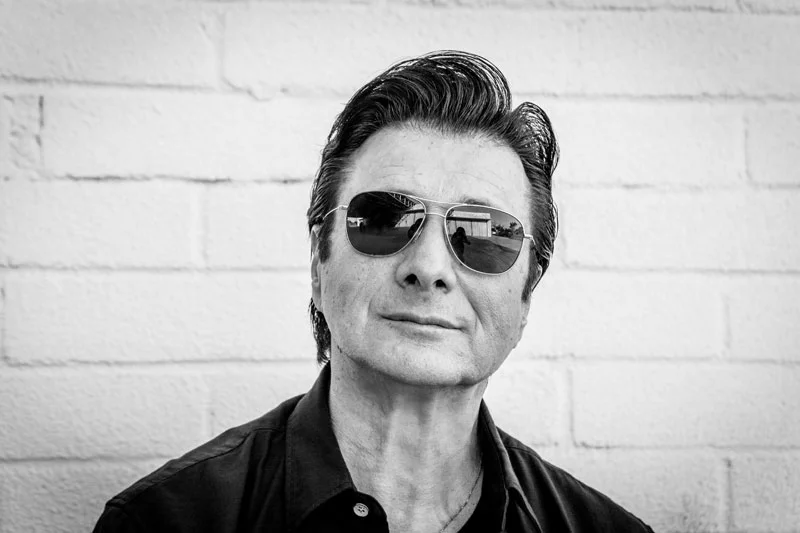
Steve Perry, widely recognized as the quintessential Journey lead singer, propelled the band to unprecedented heights during their most commercially successful era. Born with a gift for singing, Perry’s powerful and emotive vocals struck a chord with audiences worldwide. With Perry at the helm, Journey released a string of chart-topping albums, including “Infinity,” “Escape,” and “Frontiers.” Iconic songs like “Don’t Stop Believin’,” “Open Arms,” and “Faithfully” became anthems for a generation. Perry’s remarkable songwriting abilities and magnetic stage presence contributed to the band’s enduring legacy.
Current Lead Singer: Arnel Pineda

Following Steve Perry’s departure in 1987, Journey experienced a series of lead singer changes. Steve Augeri, known for his vocal range and stage charisma, took over from 1998 to 2006. Jeff Scott Soto briefly joined the band in 2006, leaving his mark with his distinctive style. However, it was Arnel Pineda who breathed new life into Journey as the current lead singer. Pineda’s incredible vocal resemblance to Steve Perry, coupled with his dynamic stage presence, won the hearts of fans worldwide. Since 2008, Pineda has seamlessly integrated into the band, injecting fresh energy and passion into their performances.
Journey’s Enduring Discography: Albums That Defined an Era
Over the past five decades, Journey has released a diverse and extensive discography, showcasing their musical prowess and creativity. Let’s explore some of their most iconic albums:
“ Infinity ” (1978): With Steve Perry as the lead singer, “Infinity” marked a significant turning point for Journey. It featured hit singles like “Wheel in the Sky” and “Lights,” solidifying their place in the rock music landscape.
“ Escape ” (1981): This album became a monumental success, boasting chart-topping hits such as “Don’t Stop Believin'” and “Open Arms.” “Escape” catapulted Journey to international stardom and remains one of their most beloved records.
“ Frontiers ” (1983): Building upon their previous success, “Frontiers” showcased Journey’s evolution with tracks like “Separate Ways (Worlds Apart)” and “Faithfully.” The album’s polished production and memorable hooks solidified Journey’s status as one of the biggest rock bands of the 1980s.
“ Raised on Radio ” (1986): Released during the band’s final years with Steve Perry, “Raised on Radio” featured a more radio-friendly sound and produced hits like “Be Good to Yourself” and “I’ll Be Alright Without You.” Despite tensions within the band, the album showcased their ability to create catchy, melodic rock tunes.
“ Revelation ” (2008): With Arnel Pineda as the lead singer, “Revelation” marked a new chapter for Journey. The album featured new recordings of their classic hits, reaffirming Pineda’s vocal prowess and rekindling the band’s popularity among longtime fans and a new generation.
“ Eclipse ” (2011): Continuing their musical journey with Pineda, Journey released “Eclipse,” a record that showcased their ability to evolve while staying true to their roots. The album demonstrated their enduring songwriting skills and featured tracks like “City of Hope” and “Edge of the Moment.”
“Escape & Frontiers Live in Japan” (2019): As a testament to their enduring appeal, Journey released a live album featuring their performances of the “Escape” and “Frontiers” albums in their entirety. The release showcased the band’s timeless hits in a live setting, capturing the energy and excitement of their concerts.
Journey’s Impact and Legacy
Journey’s impact on the rock music landscape cannot be overstated. With their infectious melodies, anthemic choruses, and powerful vocals, they carved out a unique sound that resonated with millions of listeners. Their music transcended generations, becoming the soundtrack to countless moments and capturing the hearts of fans worldwide.
Steve Perry’s tenure as the lead singer marked the band’s most successful period, and his distinct voice became synonymous with Journey’s sound. His emotional delivery and ability to connect with audiences elevated their songs to new heights and created an unparalleled legacy.
Arnel Pineda’s addition to the band injected new energy into Journey and allowed them to continue their musical journey. Pineda’s remarkable vocal resemblance to Perry breathed new life into the band’s live performances, earning him a dedicated fanbase and ensuring that Journey’s music lives on.
Journey’s timeless hits continue to be celebrated and embraced today. Songs like “Don’t Stop Believin'” have become cultural touchstones, appearing in films, TV shows, and sporting events, and capturing the imaginations of new generations of listeners.
Journey Band Member’s Ages
Here, is the list of all the Journey member’s ages. It seems like all of the Journey band members are above 50 and below 80.
Recommended Posts
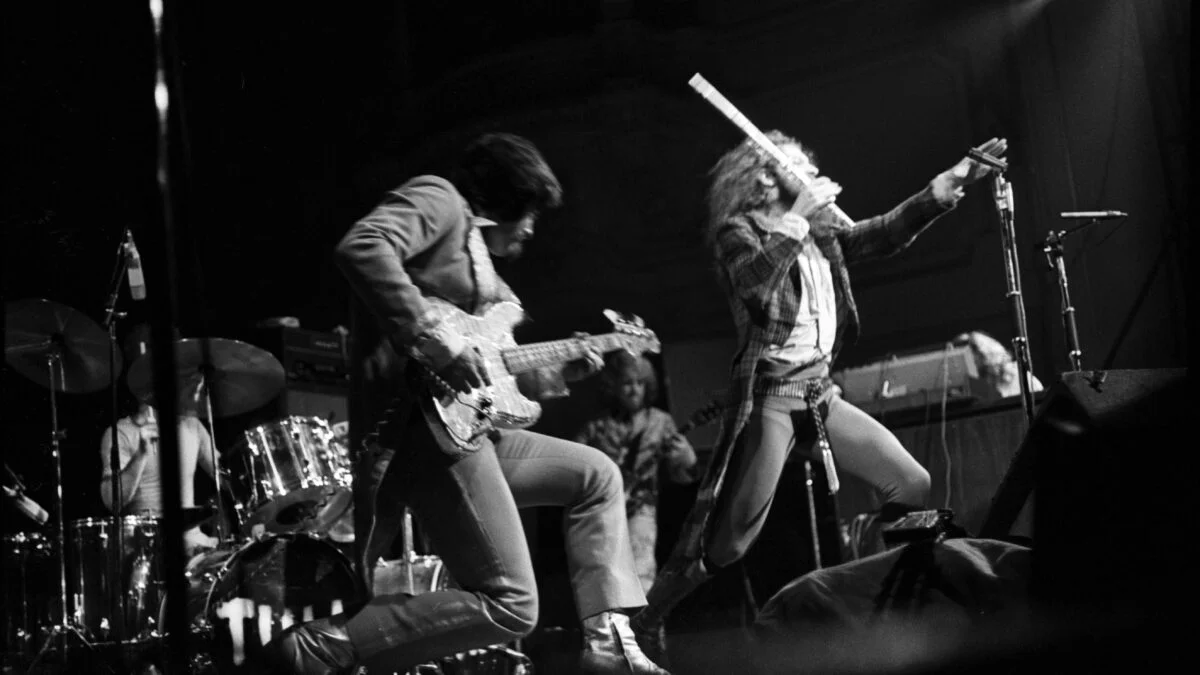
9 Best British Folk Rock Bands of All Time
Rock and folk music are combined in the genre known as British folk rock. It frequently makes use of contemporary manufacturing methods and electric instruments. The popularity of the Animals, the Beatles, and the Byrds—all of whom combined folk elements into their rock songs—had a significant impact on the emergence of British folk rock in […]
10 Best Surf Rock Bands of All Time
Surf culture, particularly that of Southern California, gave rise to surf rock. In the late 1950s and early 1960s, it reached the height of its popularity. There are two types of surf rock. Instrumental surf rock recreated the sounds of breaking waves with a lot of reverb on the guitars, bass, and drums. On the […]
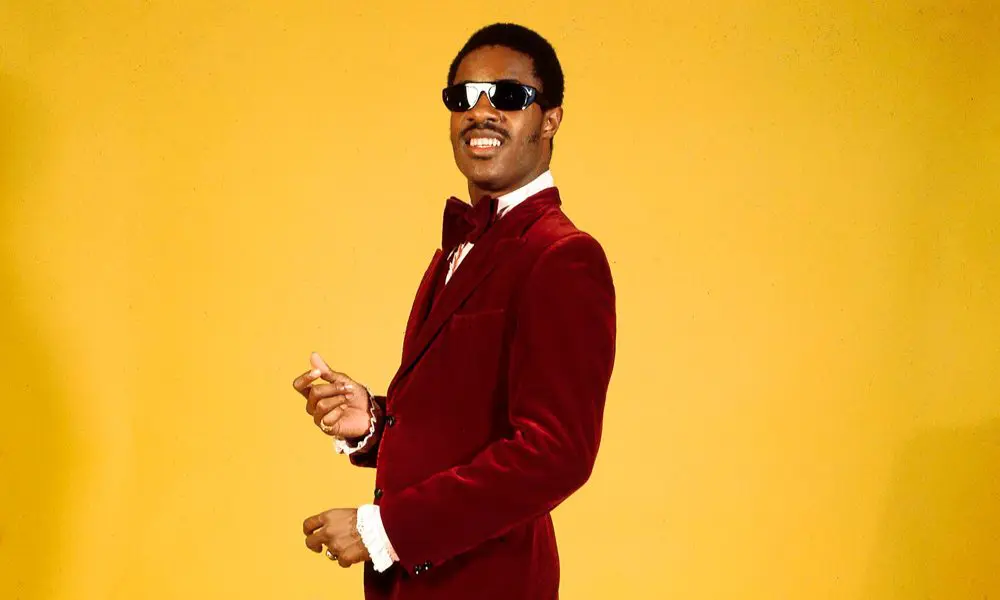
All About Stevie Wonder
Stevland Hardaway Morris has been an inspiration to people all across America. He has won over 20 major awards, had an impact on music from R&B to jazz, been able to play many different instruments—some of them simultaneously—and, to top it all off, been inducted into the Rock and Roll Hall of Fame. It makes […]
Leave A Comment Cancel reply
Save my name, email, and website in this browser for the next time I comment.
Post Comment
Steve Perry
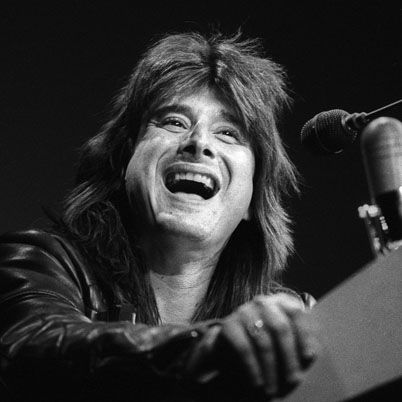
Who Is Steve Perry?
Steve Perry played in several bands before joining Journey in 1977. The band achieved tremendous pop rock success with its 1981 album Escape , which featured the now-classic "Don't Stop Believin'." As the group's lead singer, Perry became one of the era's most famous singers. He also had some hits on his own, including "Oh Sherrie." Perry left Journey in 1987, and except for a brief reunion, he remains a solo artist.
While attending high school in Lemoore, California, Perry played drums in the marching band. He tried college for a while, performing in the choir, but eventually abandoned school for his musical dreams. Hoping to break into the business, he moved to Los Angeles for a time. There, he worked a number of jobs, including singing on commercials and serving as an engineer in a recording studio. All the while, Perry played with a number of different groups as a vocalist and drummer. He seemed to be on the edge of a breakthrough with the group Alien Project, when it suddenly disbanded — tragically, one of its members was killed in a car crash.
Journey: "Oh Sherrie" and "Don't Stop Believin'"
In 1977, Perry caught his big break, landing a gig as the vocalist for Journey, which began performing as a jazz rock group in the early 1970s, in San Francisco. With Perry on board, the band moved more toward mainstream rock, and began to see some chart success with the first album with Perry, 1978's Infinity . The band's ode to San Francisco, "Lights," became a minor hit as did "Wheel in the Sky" and "Anytime."
Journey broken into the Top 20 with "Lovin', Touchin', Squeezin'" on their next album, Evolution (1979). Buoyed by such hits as "Open Arms," "Who's Crying Now" and "Don't Stop Believin'," Escape (1981) became the band's first No. 1 album, selling more than 7 million copies. While the band was hugely popular with music fans, many critics were less than kind.
By the early 1980s, Journey had emerged as one of rock's top acts. Perry proved that while he may have been short in stature, he possessed one of the era's biggest and most versatile voices. He was equally adept at ballads, such as "Open Arms," and at rock anthems, such as "Any Way You Want It." Behind the scenes, Perry helped write these songs and many of the band's other hits. He penned their most enduring song, "Don't Stop Believin'," with guitarist Neal Schon and keyboardist Jonathan Cain.
Journey continued to be one of the era's top-selling acts, with 1983's Frontiers . The album featured such songs as "Separate Ways (Worlds Apart)" and "Faithfully." To support the recording, the band undertook an extensive world tour. Around that time, Journey also became the first band to license their music and likenesses for a video game.
With 1986's Raised on Radio , Journey enjoyed another wave of success. However, Perry was ready to part ways with his bandmates. Perry left the band in 1987 after the album tour. In a statement to People magazine, Perry explained: "I had a job burnout after 10 years in Journey. I had to let my feet hit the ground, and I had to find a passion for singing again." Perry was also struggling with some personal issues at the time; his mother had become very sick, and he spent much of his time caring for her before her death.
Perry reunited with Journey in 1996, for the reunion album Trial By Fire , which reached as high as the No. 3 on the album charts. But health problems soon sidelined the famous singer—a hip condition, which led to hip replacement surgery—and his bandmates decided to continue on without him.
Solo Projects
While still with Journey, Perry released his first solo album, Street Talk (1984). The recording sold more than 2 million copies, helped along by the hit single, "Oh Sherrie." Burnt out after splitting with Journey, Perry took some time out before working on his next project.
Nearly a decade later, Perry re-emerged on the pop-rock scene with 1994's For the Love of Strange Medicine . While the album was well-received—one ballad, "You Better Wait," was a Top 10 hit—Perry failed to reach the same level of success that he had previously enjoyed. In 1998, he provided two songs for the soundtrack of Quest for Camelot , an animated film. Perry also released Greatest Hits + Five Unreleased that same year.
Recent Years
While he has largely stayed out of the spotlight, Perry continues to be heard in movies and on television. His songs are often chosen for soundtracks, and Journey's "Don't Stop Believin'" even played during the closing moments of the hit crime-drama series The Sopranos in 2007. In 2009, a cover version of the song was done for the hit high school musical show Glee , which introduced a new generation to Perry's work.
According to several reports, Perry began working on new material around 2010. He even built a studio in his home, which is located north of San Diego, California. "I'm finishing that room up and I've written a whole bunch of ideas and directions, all over the map, in the last two, three years," Perry told Billboard in 2012.
In 2014, Perry broke from his self-imposed exile from the concert stage. He appeared with the Eels at several of their shows. According to The Hollywood Reporter , Perry explained that "I've done the 20-year hermit thing, and it's overrated." His return to performing "has to do with a lot of changes in my life, including losing my girlfriend a year ago and her wish to hear me sing again" — referring to his romance with Kellie Nash, who died in late 2012 from cancer.
Although Perry and his old bandmates had long since ventured in separate directions, the group did reunite for their induction into the Rock and Roll Hall of Fame in April 2017.
In the meantime, the singer began recording again. On August 15, 2018, he released his first new song in 20 years, the ballad "No Erasin." The track arrived ahead of his new album, Traces , his first full-length studio recording since For the Love of Strange Medicine in 1994.
Regardless of what the future holds, Perry has already earned a place in rock history. Rolling Stone magazine named him one of music's top 100 singers. According to American Idol judge and former Journey bassist, Randy Jackson, Perry's voice is one of kind. "Other than Robert Plant, there's no singer in rock that even came close to Steve Perry," Jackson said. "The power, the range, the tone—he created his own style. He mixed a little Motown, a little Everly Brothers, a little Zeppelin."
QUICK FACTS
- Name: Steve Perry
- Birth Year: 1949
- Birth date: January 22, 1949
- Birth State: California
- Birth City: Hanford
- Birth Country: United States
- Gender: Male
- Best Known For: Steve Perry was the lead singer of pop rock band Journey from 1977 to 1987. He is known for having a wide vocal range, which can be heard on such popular hits as "Don't Stop Believin'" and "Oh Sherrie."
- Astrological Sign: Aquarius
We strive for accuracy and fairness.If you see something that doesn't look right, contact us !
CITATION INFORMATION
- Article Title: Steve Perry Biography
- Author: Biography.com Editors
- Website Name: The Biography.com website
- Url: https://www.biography.com/musicians/steve-perry
- Access Date:
- Publisher: A&E; Television Networks
- Last Updated: July 23, 2020
- Original Published Date: April 2, 2014
Famous Musicians

Gwen Stefani

Morgan Wallen
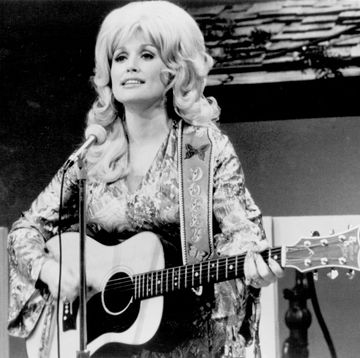
Dolly Parton Wrote “Jolene” in a Flash of Jealousy

Sean “Diddy” Combs

Carrie Underwood Is Expanding Her Music Empire

Céline Dion Gives Emotional Health Update on IG

Tyler Childers

Amy Winehouse
Journey Frontman Arnel Pineda on the Band’s New Record, Dreams of a Steve Perry Reunion
By Andy Greene
Andy Greene
In early 2020, Journey frontman Arnel Pineda flew back to his native Manila after playing a corporate gig in Texas. He was gearing up for a big year in which Journey would cut their first new record since 2011’s Eclipse and play amphitheaters all over North America with the Pretenders.
The pandemic changed all that and he’s been in Manila ever since, but Journey still found a way to work remotely on the record. It’s their first full-length since parting ways with drummer Steve Smith and bassist Ross Valory. They were replaced by bassist Randy Jackson (who briefly toured and recorded with Journey in 1986–87) and drummer Narada Michael Walden, who’s doubling as the album’s producer.
We checked in with Pineda via Zoom to talk about his lockdown life in Manila, the in-progress Journey record, the upcoming biopic about his life, and why he still dreams about a Journey reunion with Steve Perry.
How are things going? Good. I arrived here in Manila last year just a week and a half before the lockdown began. I was lucky. Otherwise, I would have been stuck in America for six months before they let me back.
This must be the longest stretch of time you’ve been home since you joined Journey in 2007. Yeah. This is the longest. I like it because I got to spend a lot of time with family and the kids and more time with myself and my wife. There are other things I would rather do than tour, so I got the chance to be here. In a negative way, it’s quite bad. The survival here is a day-to-day deal. I’m the one that goes out a lot. I’m the one that goes to the market and the grocery to refill our food stocks.
You wonder if you have the virus every day. There’s a lot of paranoia going around. It’s like what is happening in America.
Do you miss playing live? Yeah. I especially miss the energy and the adrenaline of doing it. I’m delivering on the legacy that the Voice [Steve Perry] has left behind. Especially now that he formally passed the torch to me in 2017 [at the Rock and Roll Hall of Fame induction], he made that known and he was very gracious. It was very kind of him. It was so generous of him to say that in public. It was really an honor.
What was it like to finally meet Steve after all these years? I posted on Instagram that I had waited 35 years for that. It was dreamy. I couldn’t believe I met him since he’s very reclusive and he avoids people. He didn’t want to get interviewed, at least until he released his new record [ Traces ] and then suddenly he was out there, going to radio stations and accepting interviews.
Editor’s picks
The 250 greatest guitarists of all time, the 500 greatest albums of all time, the 50 worst decisions in movie history, every awful thing trump has promised to do in a second term.
I was really surprised that he agreed to meet me. It’s one of the most special things that happened in my life. He’s one of my heroes when it comes to singing. I remember back in the Eighties, I would sleep on the bus with my Walkman on in my ears as his voice sang all these favorite songs from Journey.
I really dug his new record. It was amazing. I’ve been teasing Jonathan [Cain] and Neal [Schon]. “Why don’t you invite Steve Perry over for a tour?” Oh, my God. I never saw them back in the Eighties. I was just a young kid in Manila, just playing around, with no chance of going to the States and seeing their show, but they were one of my favorite bands.
I’ve spoken to Steve a bunch of times in the past few years. We even talked just a few weeks ago. Oh, my God!
Judging by our talks, I’m extremely confident that he’s happy to leave the Journey baton with you. That’s even more pressure I’m getting, hearing this from you. At the same time, I’m truly honored. But I’m not losing [the hope] that one day he’ll join the band for two or three songs. It would be one of the highlights of my life if that happens.
It would almost be on the scale of Led Zeppelin or Pink Floyd re-forming at this point. My God. It would be the same thing for me with Led Zeppelin because I haven’t seen them either, or Pink Floyd. I wish they would be complete again. It’s like completing a circle, being back up onstage again.
Do you think this long break has been good for your singing voice? Has it given you time to rest the muscle? I think so. At the same time, I can’t help but sing four or five songs here every day. The problem with the voice is that it changes as you grow older. It’s like athletes. They reach their peak on their 30th birthday. As they approach 31 or 32, it starts to change. It’s the same with my voice. I just want to make sure I can be of use to the band until they decide to throw the towel in.
Those are hard songs to sing for any singer. You guys go out and do 60 straight concerts in the summer and you need to hit the high notes on “Faithfully” every single time. That would be hard for anyone at any age. We’ll do five or six shows a week. I’m just quite amazed with myself a little. Somehow I was able to take it for 13 years. Let’s see what’s going to happen in the coming days. We’re on to finishing the album. We finished six songs so far. There’s talk of going out somewhere first, maybe Las Vegas for a residency. We don’t know yet. We haven’t decided. Just to break the ice between the new members and us.
You have six songs totally done? Yeah. And maybe seven songs to go.

Journey's Bassist Ross Valory Opens Up About the Band's Saga — And His Adventurous Solo Album
Watch miley cyrus cover journey's hit '80s anthem 'faithfully'.
Are these ballads? Rockers? For now, we’re doing the rocker songs first, not the ballads. I think the seven songs they’re working on, they’re working on something huge, like how you’ve known Journey doing ballads. It’s between [1981’s ] “Mother, Father” and [1978’s] “Winds of March.” We’re working on that song. We’ll see what happens. I’m waiting for them to send me the demos so that we can record it next week.
Working remotely like this must have been an adjustment. Normally, you’d be in the room together. I know. It’s quite hard right now. I have a few melody ideas that I’m into and want to share with them, but you can’t right now because of what is happening. I just have to listen to it and learn it. We use Zoom to record and I turn on my laptop and go into Logic Pro. They get ahold of it. If there’s something I want to change, I tell them. But it’s all pretty much done and I just record with them.
Are you doing the vocals on your laptop? Yeah. I’ll show you [ turns camera around and shows a microphone plugged into a computer in front of soundproofing foam ]. I share my computer, like mirroring. They can see what’s happening in my laptop. It allows them to hack it for a moment and then they can hear it. It happens in real time.
There’s no lag. I can hear that right now while we talk. It’s like you’re in the next room and you’re actually more than 8,000 miles away. Yeah. Thank God for the technology.
Do you think the album will come out this year? I think so. Neal thinks so. He can’t wait to release it before we do a full-on tour.
How do things sound different now that Randy Jackson and Narada Michael Walden are in the band? It’s somewhat like the sound back in the Eighties when Randy Jackson joined the band for the Raised on Radio album. It’s kind of like that, but it’s also more updated. Narada is producing my vocals and mentoring me on how to do it. He’s telling me to sing it this way and that way. It’s amazing. I’m learning a lot from Narada. It’s truly an honor and I appreciate him for doing so. It’s amazing.
Has the band even been in the same room yet? Have you met Randy and Narada in person? Right now, it’s just been virtual. It’s tough. I wanted to do it. I keep telling Neal, “If only I had been there, we would have done this in two months. Sorry it’s taking so long.” But with all these health protocols where you need to quarantine for two weeks, and then I come back and I’d be quarantined for another two weeks before I can join my family. It’s too much of a hassle, so we decided to do it this way even though Neal isn’t too happy about it. He wants it the old, classic way of making an album.
Moving on here, what’s the status of the movie about your life? It’s going to happen. I think they’re gonna start. Some people from Warner will start coming here. I think maybe with [ Crazy Rich Asians director] Jon Chu and [ Joker and The Fighter screenwriter] Scott Silver. They might come here to audition actors and actresses that will take part in my biopic.
Are you going to take them around town and show them the places you grew up? Yes. That’s the deal, of course. I want to show them where I grew up, where I was born, where everything happened before this whole magical thing.
Do you think the story will start in your childhood and show all your early bands and struggles and focus on the pre-Journey period? I think so, yeah. That’s the plan. I’ve spoken many times with Scott Silver. What’s interesting about my story is that I’ve survived two coup attempts here in the Philippines before I went to Hong Kong for 10 years. I don’t know he if plans to tell what happened to me in Hong Kong, but I had 10 years there. He might focus on my love story with my wife now.
I can see the grand finale in my head. It’ll be you walking onstage in Chile at your first Journey show. You’re nervous and they push you out and you burst into “Separate Ways.” Yeah. I was trying to back out five minutes before. I was like, “Neal, I cannot do this. This is not built for me.” They were like, “No. It’s too late. Get out there and do it.”
It was the turning point of your life. Everything is either before that moment or after that moment. You should tell Scott Silver about this idea. I’ve been implying it to him that we should end everything in Chile. And I remember when my wife decided to join me on tour in 2011. We were playing to a 30,000 crowd that night. I was telling my wife, “Remember Hard Rock Cafe when there were only three tables? Now it’s 30,000 people.” It was just unbelievable. It doesn’t get old to me. It’s still so surreal and bizarre.
I saw you at Citi Field with Fleetwood Mac and Madison Square Garden with Def Leppard. I could tell you were still having a blast. It’s still unbelievable. I’m just so blessed. I can’t thank them enough, especially Neal Schon. He was the one that was really sold that I am the one since 2007. But then again, I still think, “If only they could bring back Steve Perry.” You know what I mean?
I do, but if he came back, that would mean … I know, but I miss them so much together. Every now and then, I watch their videos together. It’s always them with Steve Perry that I watch. I mean, no offense to Adam Lambert. He’s an amazing performer and he has an amazing voice, but I still watch the old [Queen] ones with Freddie Mercury. That’s why when people say things like “No Perry, No Journey,” I understand it. Where I come from, we’re so influenced by Western music. We loved the originals, if you know what I mean.
His return would put you out of a job. That would be OK to me! I’m telling you. That’s how much I adore him and I adore Journey and how much I adore Steve Perry. Back in 2005, I resigned from my job in Hong Kong because I lost my voice due to acid reflux. I was telling my friends back then that my only regret was I lost my voice before I had the chance to sing side-by-side with Steve Perry. I was joking with them, but then a different situation happened. I just wish that one show with him … it would change my life forever. It’s been 30 years now and the band keeps changing my life in ways nobody would ever guess would happen.
Do you miss Ross Valory and Steve Smith now that they’re out of the band? I do, of course. We had a real bond that nobody can deny. [ Sighs ] When the first day came that Steve Smith went back, I could feel that he was trying to feel everything out and observe. When he got the good vibe again, we clicked. Four years with him was very special. And 11 years with Ross was amazing. I cannot ask for anything more. Those friendships I’ll take with me until the end of time.
The group has dealt with a lot of tensions and feuds during your time with them, but you always remain neutral and out of the fray. How do you do that? I try to stay away. It’s like, “Oh, the big boys are fighting.” I’d rather stick to my guns, which is just singing and delivering the legacy with them onstage. When we’re up onstage, I think everyone forgets their differences behind the scenes. That’s my happy place. When they’re having some petty quarrels, I try to stay away. I talk to everybody without having to talk about their differences.
Your White House visit caused a bit of controversy. Do you have any regrets about going there and meeting Trump? I do not. As a Filipino, I am such a big fan of the White House. It’s not about Trump. It’s not about who the president is. It’s the whole history of the White House. I was just amazed. When I went there, I looked at all the pictures of past presidents and how old everything was. And then the table where President Trump was seated was about 100 years old. Who wouldn’t want to see that? Who wouldn’t want to touch that?
His presidential guard was laughing at me because President Trump was talking to the other members [of the band] and I was just mesmerized by the table. I was like, “Wow! This is truly 100 years old?” I’m just a kid from Manila and I was in the White House for the first time, so no regrets. I guess I didn’t even have a chance to apologize to Neal. He must understand. I’m just a kid from Manila that wants to see the White House, in general.
What’s the status of your next solo record? I’m doing it right now. I’m just waiting on a couple of friends that are helping me finish it from the States. Because of the recent banning of some countries from coming in here, we got delayed. I’m expecting them to arrive here at the end of March instead of the end of January. Even my online streaming concert was moved to April 18th. It was supposed to happen in February. To those who want to get a ticket, it’ll be at sanrestreaming.com .
Back to the movie, do you think being on set and watching someone play a younger version of you will be a surreal experience? It will be weird, but it’ll be weirder if I am there portraying myself! [ Laughs ] I will not be able to stand there and look at myself. I don’t really listen to myself singing either. When the documentary Everyman’s Journey came out, I could barely watch it. The premier was in Tribeca. I was like, “Do I really have to watch this and see myself on the big screen?” I was cringing.
Do you think the actor in the movie will actually sing, or will you provide the vocals? I think I’m going to use my voice. Do you remember the Queen movie [ Bohemian Rhapsody ]? Marc Martel did the voice. I think I’m going to do that too.
I can’t wait. Crazy Rich Asians is a great movie. Jon Chu really knows what he’s doing. It’s unbelievable that he took notice of my life and my story and wants to make a movie out of it. It really humbled me.
They should film it in Manila and not somewhere else. It should look authentic. They definitely will. There’s so much to remember, I’m telling you. At one point in my life, I was really on drugs. It quite affected my memory. I need to recover all those things that happened to me when I was young. But I’ve recovered a lot of my childhood memories. Scott Silver is quite happy with what I was able to tell him.
I’m very hopeful that before 2021 ends, you’ll be back onstage with Journey. Me too. I can’t wait to see those smiling faces and that rolling-thunder sound of the audience. It’s quite an adrenaline [rush] when you experience that every night. That’s what keeps you going.
See Sky Ferreira Cover Lady A's 'Need You Now' During Surprise Coachella Appearance
- coachella 2024
- By Daniel Kreps
Drake Responds to Rick Ross' Nose Job Claim, Warns Rapper After Diss, 'Don't Worry We'll Handle It'
- 'one nosey goof'
Latin Mafia Made It Big Without a Label or Album. Now They're Getting Ready to Play Coachella
- going global
- By Lucas Villa
Tyler, the Creator Sets Coachella Ablaze as No Doubt, Sublime Bring the Nostalgia on Day Two
- Coachella 2024
- By Tomás Mier and Ethan Millman
Taylor Swift and Travis Kelce Dance to Ice Spice, Bleachers at Coachella 2024
- By Althea Legaspi and Tomás Mier
Most Popular
Jodie foster pulled robert downey jr. aside on their 1995 film set and told him: 'i’m scared of what happens to you next' because of addiction, where to stream 'quiet on set: the dark side of kids tv' online, king charles just revealed the two royals who will be stepping up for him amid health struggles, dave chappelle says dinner with kanye west and "naked" bianca censori was "uncomfortable", you might also like, ‘queen rock montreal’ coming to disney+ with imax enhanced sound by dts, megan fox, charli d’amelio and more attend revolve festival, with ludacris as headlining performer, the best running water bottles according to marathoners, george miller wrote a ‘novella’ for the ‘mad max: fury road’ cast and crew that helped inspire ‘furiosa’, conor mcgregor return to ufc set for june in las vegas.
Rolling Stone is a part of Penske Media Corporation. © 2024 Rolling Stone, LLC. All rights reserved.
Verify it's you
Please log in.

Bios, band histories for the greatest in rock.
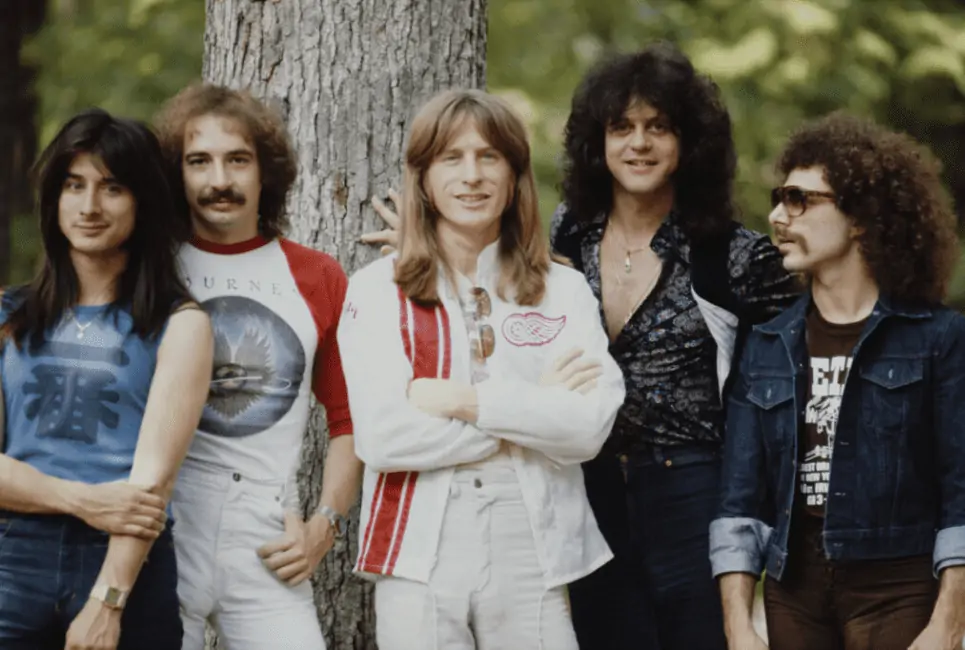
Journey Band History
- Latest Posts
- 10 Best 80s Rock Trios – When Rock Became ‘Modern’ - March 26, 2024
- 10 Best 90s Rock Trios – The Last Great Rock Trios - January 25, 2024
- Best Blues Power Trios of All Time - January 12, 2024
Journey Quick Facts Up Front
Gregg rolie, steve perry, jonathan cain, steve smith, ross valory, journey (1975); look into the future(1976); next (1977), infinity (1970), evolution (1979); departure (1980), dream, after dream (1980), escape (1981), raised in radio (1986), trail by fire (1996), arrivals (2000), revelation (2008), freedom (2022).
- Early Days Journey in their Fusion Days: Journey - Full Concert - 03/30/74 - Winterland (OFFICIAL)
- Arguably the Best Group Lineup Performing During the Escape Tour: Journey - Don’t Stop Believin’ (from Live in Houston 1981: The Escape Tour)
- A Recent Performance with Schon at the Helm. Pineda’s Vocal Performance is Stunning: Journey Live @ Lollapalooza Chicago 2021
The Journey Lawsuit & Replacements
Did journey sell out.
The glorious days of arena rock would not be as memorable without Journey. There could not be a better name for a band that went through many changes, successes, and failures and almost single-handedly rose the power ballad to the charts.
Journey’s band history is the epitome of 80s rock and the clashes between some of the most extraordinary rock musicians of the time.
Like all Journey fans, the first songs I heard were Steve Perry’s lead emotional ballads. He was the perfect singer for the ideal backing band. Yet, listening years later as a musician, I understood that it was not Steve Perry’s or Neal Schon’s Journey; the group’s creative chemistry made it all happen. Apart from the most commercially relevant period, Journey was and still stands strong. This bio might introduce you to some aspects and periods of the band that are now almost forgotten.
Journey Members You Should Know
The lineup changes are crucial to Journey’s band history. Nowadays, with only Neil Schon left as a founding member, we need to go back to the early days to understand who wrote and played the songs that made them famous.
All lineups were made up of the top rock musicians of each era. Not all, though, contribute as much as others.

Neil George Joseph Schon (born February 27, 1954, in Oklahoma) is the band’s guitar player, founding member, and occasional songwriter.
Born in a musical family, Schon soon became a child prodigy after starting playing guitar at ten and being recruited by Santana at age 17. By the time he started Journey, he had experience playing in one of the best bands in the world and was fluent in jazz, rock, and Latin music.
Neal Schon is one of the most melodic guitar players of all time. He essentially shifted my perspective of a rock solo to a musical piece that tells a story rather than a power shred, which he occasionally tastefully adds.
Schon was always the leader behind the scenes, taking a significant say in all the band’s important decisions and even personally firing and replacing members. As a solo artist, he released nine albums and founded the bands “Hardline” and “Bad English.”

Gregg Alan Rolie (born June 17, !947, in Washington) is a founding member and journey original keyboard player and vocalist. As a Santana band member, Rolie was already a senior musician by the time Schon joined. He arguably shared with Santana the same success as with Journey, singing and playing in some of their biggest hits.
He formed Journey in 1973 and co-wrote the band’s first six albums before being replaced by the pressure of Steve Perry’s musical choices.
Rolie was as essential as Schon in creating the “Journey Sound” with signature Hammond, piano sound, and a bed of synths that backed the band’s rock groove.
Rolie is one of the most prolific musicians ever, with a successful solo career after his time with the band. He founded with Journey’s ex-member “The Storm.” He was part of Ringo Star’s “All Starr Band.”
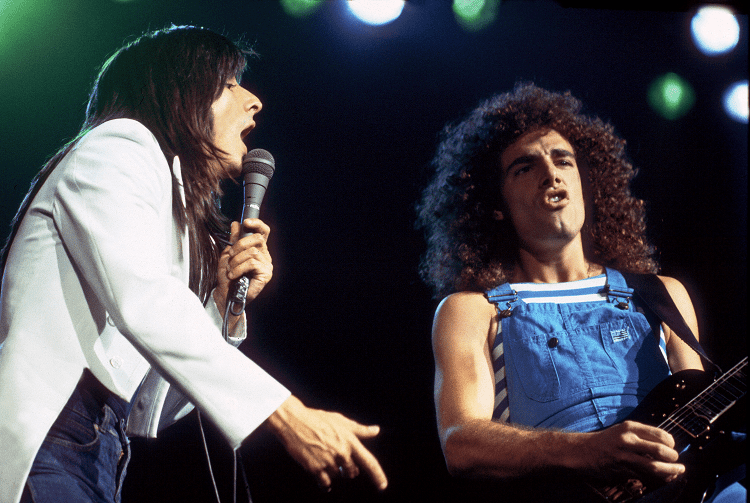
Steve Ray Perry (born January 22, 1949, in Hanford, California) was Journey’s lead singer, frontman, and main songwriter in their most successful years.
Perry’s exceptional vocal range and affinity for writing ballads and pop songs gave Journey what they needed to become the biggest arena rock band in the world. His musical beginning, though, was unsuccessful, with many failed attempts, sometimes even from misfortunes.
Manager Herbert picked up one of Perry’s demos while he had returned to working on his family’s farm and called him to perform with the band while Rober Fleischman was already hired as a singer. One song performed during soundcheck with the band sealed his place as frontman.
Perry undoubtedly came at the right time in the right band to change it all for Journey. The mental cost of fame and several misfortunes, the last a degenerative bone disease, forced him out of the band.
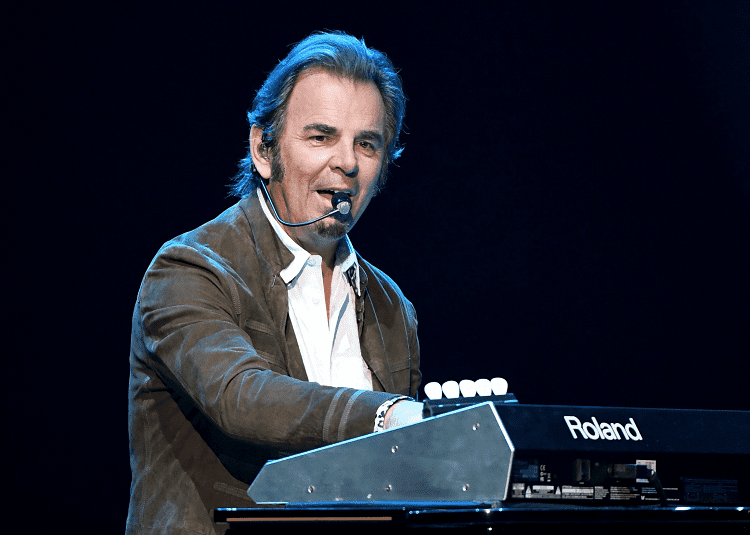
Jonathan Leonard Friga (born February 2, 1950, in Chicago, Illinois) was Journey’s most prolific keyboard player, coming in to replace Rolie and helping write the band’s most successful material.
Cain is a multi-instrumentalist who made a name for himself with the band “The Babys.” which opened for Journey. His ability to write with Perry was what convinced the singer to replace the already prolific Rolie.
Cain turned the already well-tuned Journey rhythm section into a hit-power ballad maker. Unlike Rolie, Cain’s signature is more straightforward melodic piano intros that laid the bed for tunes such as “In My Arms” or “Don’t Stop Believing.”
He was part of “Bad English” and recently started publishing Christian Rock records while serving as a Worship leader with his wife.
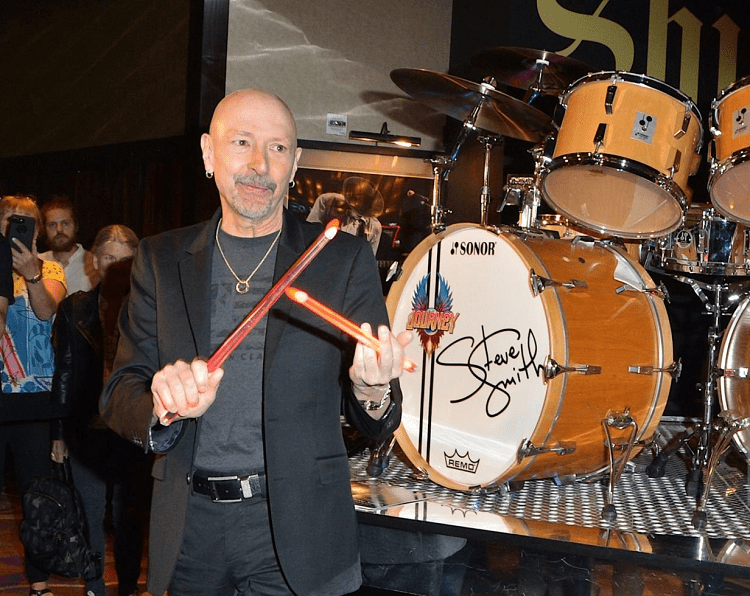
Steve Bruce Smith (born August 21, 1954, in Whitman, Massachusetts) was Journey’s drummer through their most prolific years and is widely considered one of the best musicians to ever sit behind a kit.
Smith is one of the most recorded drummers in history, having played sessions for virtually every top charting artist. He was voted five times in a row No.1 All-around Drummer from Modern Drummer magazine and inducted into the Modern Drummer Hall of Fame.
The session legend was part of three different Journey Lineups, part of Journey member’s spin-off group “The Storm,” and led his jazz-fusion groups.

Ross Lamont Valory (born February 2, 1949, in San Francisco) is a founding member of Journey and the bass player in two different lineups.
Like the other founding members, Valory played with a legendary group before forming Journey. He was part of Frumious Bandersnatch and later Steve Miller Band. He holds a special place in Journey’s history, playing in all but one studio record. Even when he was not part of the band, he was hired to write and record bass tracks.
Valory is a master bass player who uses his variation of a “Nashville Tuning,” Where the 4-string bass is tuned to B-E-A-D. He continued his career in the 90s with “The Storm,” like most original Journey members.
Journey started as the most accidental Supergroup ever in a time when the notion was still new. Ex-member of Santana and Steve Miller members got together to form their prog rock, jazz fusion band called “The Golden Gate Rhythm Section.”
The mastermind behind much of Journey’s career was their manager Herbier Herbert who previously managed Santana.
The band would perform as a backing band for Bay Area artists, with Schon and George Tickner on guitar, Rolie on Keyboards and vocals, Valory on bass, and Prairie Prince on drums. The latter would be replaced by Aynsley Dunbar around the same time Tickner quit.
The early “Journey” never achieved commercial success, mostly due to their previous musically complex influences and the lack of a strong frontman. Roli was an excellent keyboard player and vocalist, but his old-style appeal was not what the band needed to relate to young audiences.
As a band, Journey has evolved and changed more than most. It sounds like a different band from the 1st to their 14th studio album. I’ll detail most of their stunning discography according to their impact on the band and rock music.
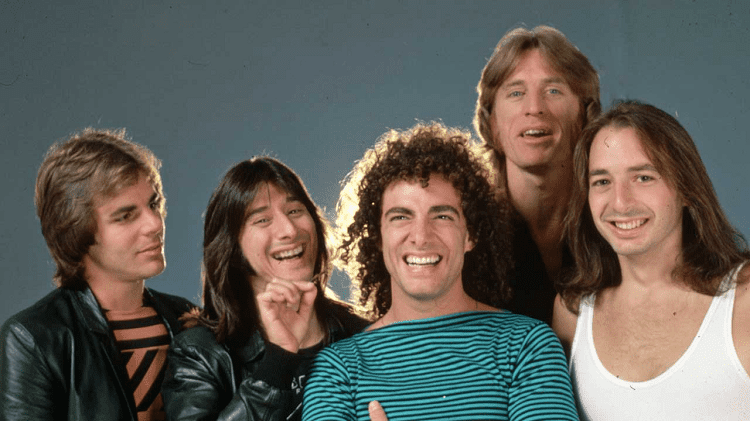
The first 3 Journey albums are a musical treat for every sophisticated rock lover. The complex compositions, delicate songwriting, and individual chops of members are three key elements that made them. There are no weak songs in any of them, yet there are not many memorable ones.
The Debut album is the ex-Santana and Steve Miller Band members having fun. The prog style might be their favorite thing to do, but as prog rock was slowly going off the charts, rock audiences needed something else.
From the first to the third album, the experimentation leaves off more place for catchy tracks. With Roli at the creative front and Herbert at the back, the band seemed to tone down their fusion influences to achieve success finally.
Commercially none of the albums did exceptionally well, and most of the band’s time was spent touring and trying to promote them.
As a guitar player and prog rock freak, I love early Journey sometimes more than the Steve Perry one. I find Neal Schon’s best guitar performances when some glimpses of jazz fusion are put in the mix.
Not to say that his later solos were less iconic, but later I found he would mainly “serve the songs” while the guitars made the song on the early Records. The same can be said about every lead instrument.
Depending on your background and taste, you could either love this version of Journey or, like many new fans, skip the three albums entirely. If you belong to the second group, I will encourage you to listen to the first song from the Debut Album, “Of a lifetime, “and you might change your mind.
The Much Needed Lead Singer
The musical chemistry, management, and inspiration were there for Journey, but their image and performances lacked the strong crowd-pleasing frontman. Behind the Keyboards, singing lead vocals, Roli did his part musically, but not stylistically.
The band’s first singer, hired with Herber’s suggestion, was glam rocker Robert Fleischman. With a high register and great stage presence, Fleischman toured successfully with Journey in 1977 until Steve Perry replaced him after he sang one in soundcheck with the band on the same tour.
Perry not only performed flawlessly exciting songs but managed to bond immediately with Neil Schon in writing their first songs together. The band changed direction and with that also their drummer. Session ace Smith replaced Dunbar, who was unhappy with the new pop direction of the band.

The first album with Perry as lead vocalist launched the band to commercial success reaching No. 21 on Billboard. “Infinity” marks the band’s change in musical direction, with Queen’s producer Roy Thomas Baker directing the shift.
The album is strong in every aspect. The songwriting, production, intent, and musicianship are top-notch. It combines the band’s collected materials and Perry’s melancholic songwriting over the years. His voice added character to the virtuoso band that needed it. My favorite song from the album is “Wheel in the Sky,” written by Fleischman and the band before Perry joined in. Perry’s voice, though, I think, does it more justice.
It starts with Neil Schon’s classically influenced guitar part and develops to a hard rock tone with a country riff. The mixture of different genres is, I think, what makes all individuals of the band shine.
The two songs that better defined the band’s musical direction were the power ballads “Lights” and “Patiently.” Slow-tempo emotional tracks with a solid vocal melody that builds up to guitar solos and live encores. Both tracks are now legendary and staples of the band’s live shows.
The following two Journey studio albums saw the band’s rise to fame, each doing better than the previous. They were headlining tours and festivals and having crowds resonate massively with their songs for the first time.
Both albums continued where “Infinity” left off, merging Perry’s now-proven hit songwriting skills with the band’s musicianship. The new frontman was now contributing to all the songs and indirectly dictating the band’s sound. Not all songs are great, though; most lack memorable hooks and fade compared to the hits.
My favorite of the two albums is “Departure.” There’s a spice more of prog rock in that album which I think brings out the best of the band. After all, the band was not originally an Arena rock act.
“Any way you want” and “Loving’, Touchin’, Squeezin;” are widely known tracks. My favorites are the less popular “Do You Recall” and “I’m Cryin,” which Perry and Rolie co-wrote.
The next record was a musical spin-off as a soundtrack album. Beyond all expectations, the band produced the most musically intricate prog rock album of their career.
It’s arguably the most polarising album of Journey’s catalog, yet one the band truly enjoyed making. The all-star band of virtuoso musicians couldn’t wait to stretch the musical muscles once again as in the old days. The result is fantastic prog rock, yet not one you would most likely hear on the radio.
I adore the compositions and musicianship on all the songs, especially the 8-minute opening track “Destiny.” In true prog fashion, extended instrumentation and solos weren’t missing.
It’s not an album for everyone, but those who like it, love it.
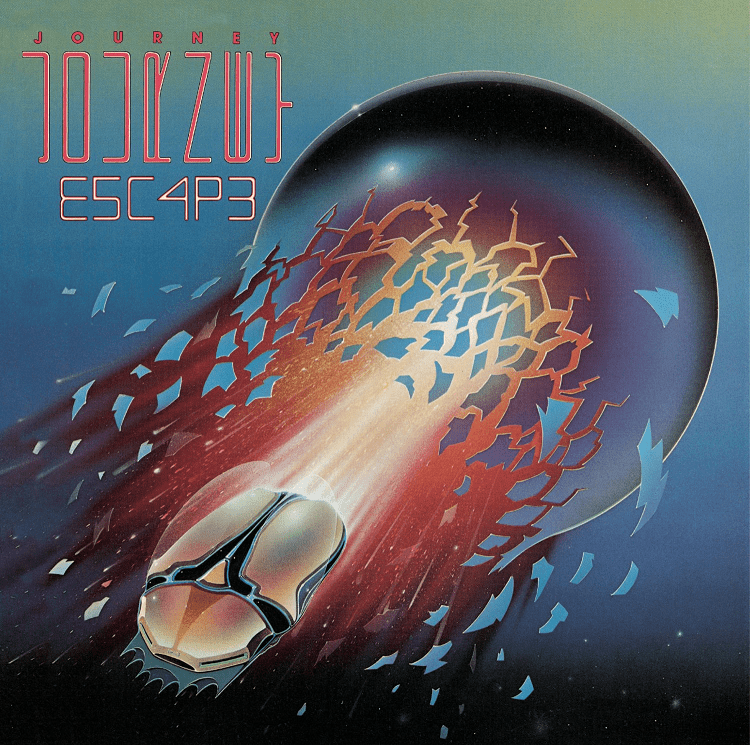
Rolie leaving the band in favor of Jonathan Cain might have consisted of one of the best musicians on earth, but it gave them the best-selling album of their career . The album almost single-handedly created the 80s sound.
The album starts with the band’s epic rock anthem, “Don’t Stop Believin’.” The song was started by Perry and Schon and later finished by Cain, who added the piano hook and hook. As Cain relieves in an interview, those were the three words his dad told him when he wanted to quit music.
The song is today the best-selling catalog track of the digital era. It’s now beyond a rock anthem to a pop culture hit. Journey’s “Free Bird” in a sense.
Cain brought in the catchy hooks and memorable piano parts and perfectly completed Perry’s ideas. The ballad “Open Arms” they wrote together differed from previous ones. It was more delicate, straightforward, catchy, and singable. After some struggles in getting it through Schoun skeptical reception of the song, it became a fan favorite.
Journey – Open Arms (Official Video – 1982)
The song that moves me the most is “Mother, Father.” Perry recorded the vocals in one mesmerizing take. What’s more impressive is that it is probably the hardest Journey song to sing.
“Espace” paved the way for the next charting album in 1983, “Frontiers.” It produced hit songs and anthems and delivered on the success of the previous albums.
Success and Downfall
Journey waited three years to release an album for the first time in their career. The continuous touring and fame were starting to kick back. Schon and Perry had also released their solo records capitalizing on Journey’s Success.
Perry, at this time, dominated the band’s musical direction completely. According to him, only Schon and Cain were suited for the band as he fired Roos Valory and, slightly later, Steve Smith. As he declared in an interview, he thought it was the best decision at the time, but he regrets doing it.
His mental health was also deteriorating as the rise to fame alienated him from the rest of the world.
Replacing both members with session musicians gave the trio more control over the songs. Perry himself took up the role of producer for the album. “Raised In Radio” is a successful attempt to top the charts through their hit song formula, but the lack of team effort is felt.
I think the album is too poppy and sacrifices the musical input of Valory and Smith for attempted hooks. There are undoubtedly hit songs such as “Girl, I Can’t Help It” and “Be Good To Yourself,” yet it’s not an album I can enjoy listening to back to back like the rest.
Commercially it did well, as expected. The band knew how to write hit songs and what the audience wanted by this time. Listening to it now, It feels like Perry’s rushed attempt to stay on top of the game and even outdo himself.
Disbandment and Attempted Comeback
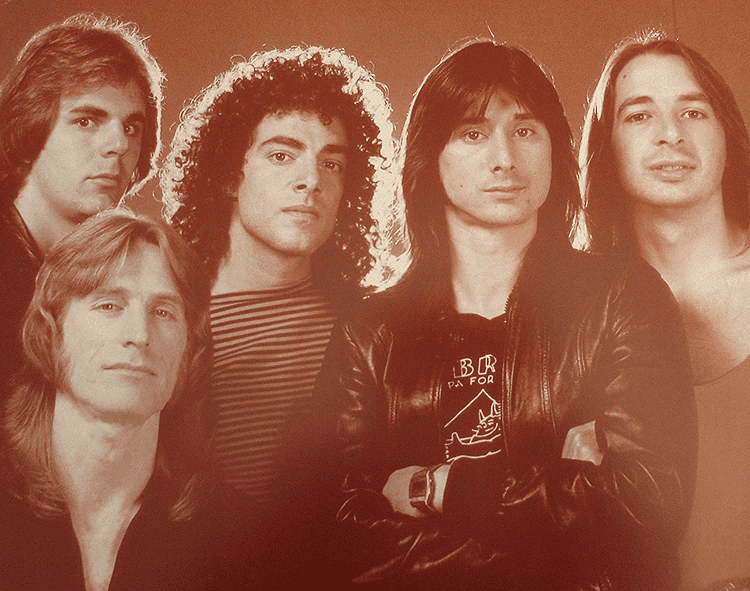
The problems with Perry’s control over the band and continuous isolated life lead to him wanting to stop everything. After his last show with the band in February 1987, he left the band and stopped Journey for almost ten years.
Perry never released an official statement, and some still wonder if the animosity between members was the main cause of his leaving. The fact that he released music after leaving the band makes me think he still wanted to make music on his own, in less frantic terms.
One thing is for sure; Journey couldn’t keep up their successful streak without Perry, so each went separate ways.
In 1995 the band reunited again at Perry’s request to fire current manager Herbert for the well-known Irving Azoff, which staged the Eagles’ comeback some years prior.
Journey was back, and a long-awaited successful album came shortly after. All members had amassed material during the years, so a musically rich album was bound to come.
“Trial by Fire” is my favorite Journey album after “Escape,” as it delivers the quality you’d expect from a great comeback. The hit song “When You Love a Woman” was surely meant to be a hit, but it’s not formulaic in any way.
Valory and Smith back on the band brought back the original backbone of the group. Putting this album back to back with its predecessor, you will notice the difference the rhythm section had in Journey after a few tracks. It gives character to songs having individual doing their thing and not hired guns.
I wish it had some more elements of hard rock, but that might be just the nostalgia from the days of “Don’t Stop Believin’.”
This album is the last Perry contribution as he was diagnosed unexpectedly with a bone condition and was unwilling to undergo surgery to continue touring.
Modern Journey

Journey is still touring and releasing albums today, with only Schon remaining an original band member. He calls the shots about the music direction and often replaces members.
After Perry distanced himself from music, the band moved on and recruited Steve Augeri as frontman, with drummer Deen Castronovo as occasional lead vocalist. Augeri was the perfect vocalist for Journey, who needed the same high-pitched power Steve Perry had.
Of the two albums Journey released with Perry, the first one is the only one that somehow matched the previous albums’ quality. It’s not the band’s most creative work, yet it’s an album with the pure Journey sound almost intact.
The album is instrumentally great but lacks strong songwriting. Augeri contributed to some songs, yet his role as the newcomer was to sing, according to Schon and Cain’s writing.
The song “World Gone Wild” is my favorite of the whole album, showing off Augeri skills at best and some great guitar work by Schon.
Commercially it did well, considering that arena rock was not the most popular genre of the early 2000s. I think that part of the merit goes to the fans’ curiosity and joy of having another Journey album.
The next album with Augeri, “Generations,” was the band’s least successful record after having him fired.
Ariel Pineda replaced Augeri in a dream story of Schon recruiting him after watching his Journey Covers on YouTube. The album was the band’s last big commercial success, even though the era of rock bands topping the charts was gone.
In true Journey style, Cain delivers a hit power ballad. “After All These Years” is just as good as any of the band’s legendary ballads and is only penalized by the rise of pop and dance music. I love how the band switched to a hard rock style for this record, flexing some fast-paced tempo grooves after a while.
Pineda seemed to be a bigger creative force than Augeri and an equally experienced live frontman. The live shows with the classic hits were and still are the band’s main focus, accumulating ridiculous amounts from the tour.
Having survived a pandemic, lawsuit, and personnel changes, Journey released their new record in more than a decade. Years of accumulated creativity resulted in an arena rock juggernaut.
Cain and Schon were in charge of the production, while drummer Narada, a prolific songwriter and singer, helped write and co-produce much of the material. It starts with the power ballad “Together We Run” and the expected melodic Cain piano intro.
Listening to album after ten other Journey pop-rock records can be too much if you’re not a die-hard fan. I would have preferred a more Prog rock Journey record as that always brings new sounds.
Notable Performances
Early days journey in their fusion days: journey – full concert – 03/30/74 – winterland (official) .
Arguably the Best Group Lineup Performing During the Escape Tour: Journey – Don’t Stop Believin’ (from Live in Houston 1981: The Escape Tour)
A Recent Performance with Schon at the Helm. Pineda’s Vocal Performance is Stunning: Journey Live @ Lollapalooza Chicago 2021
Changes in band members always come with legal issues when rights to songs are on the table. In the 80s, they maintained a good balance between members. Primarily due to solid management from Herbert, things were kept quiet.
Valory and Smith were fired from the band in 2019 after attempting to own one of the band’s corporate entities. According to the two, Perry gave them the right to hold that part of the business. Schon and Cain considered this an attempt to squeeze more money even when they were not playing.
Journey did write beautiful songs, yet the term’ corporate rock’ started to haunt them as each charting album chased the next big thing. The bad reputation arena rock gets from rock fans sometimes comes from the many attempts to write hits and please the crowd.
My stand as a rock fan with a taste from Beatles to modern metal is that Journey didn’t sell out in the sense of chasing money. Their style evolved, sometimes in search of a bigger fanbase, but still, they delivered nongeneric hits.
They developed a successful style that pushed them to recreate the success repeatedly. The members’ egos, management pressures, and fans’ high expectations had their parts.
Answer : One roadie, John Villanueva, suggested the name after failed attempts, including a radio contest involving the fans to find a proper name.
Answer : Journey had six lead singers in the band from the 70s to today.
Answer : Arena rock is considered any rock genre that can fill a stadium on a one-night event. In the mid-70s and 80s, it took a slightly different meaning, becoming a synonym for successful commercial rock bands who were best known for Power Ballads. Arena rock bands deliver great spectacles with massive crowds and often have predictable, straightforward music to resonate with as many people as possible.
- Journey (band) – Wikipedia
- Journey Documentary (Behind The Music)
- Don’t Stop Believin’: Everyman’s Journey HD
- Journey – Raised On Radio (1986 Tour Documentary)
- Journey Music
- Journey (band)
- Journey’s Neal Schon says he and Steve Perry are ‘in a good place’ before band’s 50th anniversary
- Journey Biography, Songs, & Albums | AllMusic
- Journey – The Brilliant Band Members, Stories & Struggles | Eagle 106.5
- Journey: Band Members and History
Looking for more interesting readings? Check out:
- The Police Band History
- AC/DC Band History
- R.E.M. Band History
Related Posts

The Beatles Band History
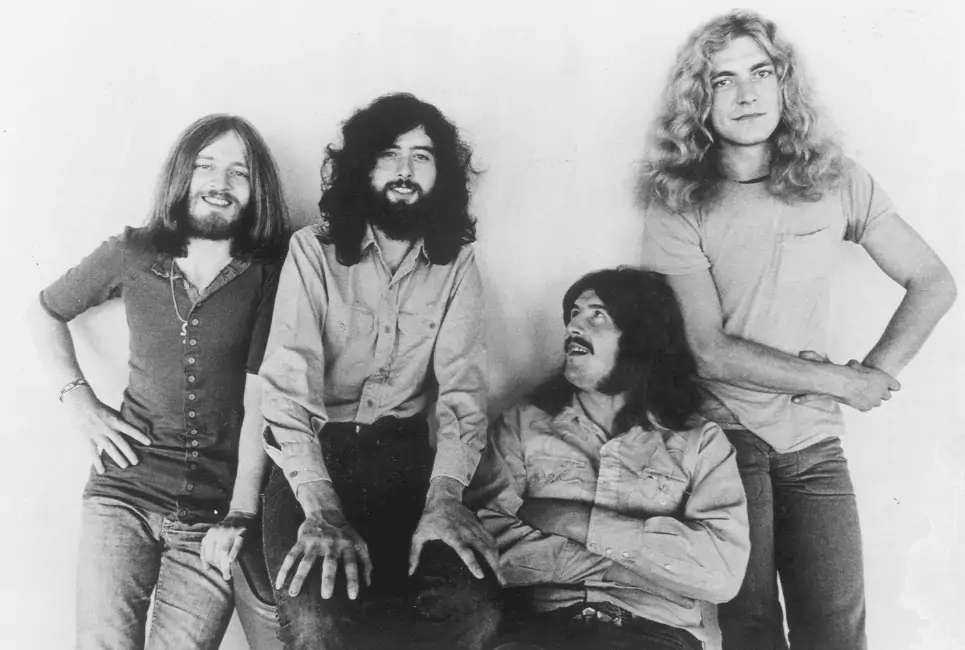
Led Zeppelin Band History
Leave a comment.
Your email address will not be published. Required fields are marked *

New JOURNEY Band Biography 'Worlds Apart' Now Available
Time Passages has announced "Journey: Worlds Apart" , the definitive accounting of the "Don't Stop Believin'" hitmakers by award-winning journalist Nick DeRiso . A multiple columnist of the year award-winner with the USA Today network, DeRiso conducted dozens of interviews to compile a book that's not just a biography of JOURNEY — it's a backstage pass.
JOURNEY started as a dream for former SANTANA road manager Herbie Herbert , who thought he could build a blockbuster band out of the remnants of post- Woodstock SANTANA with Gregg Rolie and Neal Schon . Turns out, he could — but it would take a few albums, and the arrival of frontman Steve Perry . By the time Rolie exited at the turn of the '80s, JOURNEY was already a multi-platinum band — and they would only get bigger with the addition of Jonathan Cain from JOURNEY 's former opening act THE BABYS .
Solo projects and long periods apart slowed their momentum until Perry finally left for good in the late '90s. Then JOURNEY was faced with one of its biggest challenges: Whether and how to move forward without the singer who had redefined their sound forever on songs like "Open Arms" , "Only The Young" and "When You Love A Woman" .
The story is guided from their earliest roots by conversations with co-founding members Schon , Rolie and Prairie Prince , along with longtime Herbert confidant Pat Morrow . DeRiso then follows JOURNEY toward pop-culture superstardom through additional talks with later-era collaborators Cain , Steve Smith , Deen Castronovo , Steve Augeri and scores of producers, sidemen, label representatives and acknowledged experts like former Rolling Stone contributing editor David Wild , original MTV VJ Martha Quinn , and longtime San Francisco Chronicle music writer Joel Selvin , the latter of whom covered JOURNEY almost from the beginning.
Along the way, "Journey: Worlds Apart" emerges as the definitive look back at Journey, with deep explorations of every era, every album and every song. Pathway collaborations and key side projects complete this detailed analysis, as DeRiso speaks with John Waite , Jan Hammer , Marco Mendoza , Ron Wikso and others.
Nick DeRiso is assistant managing editor with Townsquare Media . Time Passages most recently published "Eagles: Up Ahead In The Distance" , the second in a three-book series.
Time Passages, LLC is an independent publishing based near Annapolis, Maryland.
For more information, visit www.timepassages.net .
Coming soon! Posted by Journey: Worlds Apart on Thursday, December 7, 2023
Comments Disclaimer And Information
BLABBERMOUTH.NET uses the Facebook Comments plugin to let people comment on content on the site using their Facebook account. The comments reside on Facebook servers and are not stored on BLABBERMOUTH.NET. To comment on a BLABBERMOUTH.NET story or review, you must be logged in to an active personal account on Facebook. Once you're logged in, you will be able to comment. User comments or postings do not reflect the viewpoint of BLABBERMOUTH.NET and BLABBERMOUTH.NET does not endorse, or guarantee the accuracy of, any user comment. To report spam or any abusive, obscene, defamatory, racist, homophobic or threatening comments, or anything that may violate any applicable laws, use the "Report to Facebook" and "Mark as spam" links that appear next to the comments themselves. To do so, click the downward arrow on the top-right corner of the Facebook comment (the arrow is invisible until you roll over it) and select the appropriate action. You can also send an e-mail to blabbermouthinbox(@)gmail.com with pertinent details. BLABBERMOUTH.NET reserves the right to "hide" comments that may be considered offensive, illegal or inappropriate and to "ban" users that violate the site's Terms Of Service. Hidden comments will still appear to the user and to the user's Facebook friends. If a new comment is published from a "banned" user or contains a blacklisted word, this comment will automatically have limited visibility (the "banned" user's comments will only be visible to the user and the user's Facebook friends).

advertisement
- Live Rock Performances
Journey Through the Decades: Exploring the Legacy of the Iconic Rock Group Journey
Rock group journey: a step-by-step guide to their success.
Journey, the iconic rock group that dominated the charts in the 70s and 80s, is one of the most successful bands in music history. Known for their electrifying stage presence and memorable anthems, Journey continues to inspire new generations of fans worldwide.
In this blog post, we will take a step-by-step look at Journey’s success story and explore what made them stand out from other bands during their time.
Step 1: The Early Days Formed in San Francisco in 1973, Journey initially started as a progressive rock band with humble beginnings. The original lineup consisted of guitarist Neal Schon, keyboardist Gregg Rolie, drummer Prairie Prince, bassist Ross Valory and vocalist George Tickner. Their debut album did not achieve much commercial success, but it laid the foundation for what was to come.
Step 2: A New Sound Journey’s sound started evolving in their third album “Infinity” which marked the first time lead singer Steve Perry lent his powerhouse vocals to the mix. This partnership with Perry played a crucial role in shaping Journey’s signature sound that would cement their place in music history.
Step 3: Chart-Topping Hits With Perry onboard as their frontman, Journey’s fourth album “Escape” became an overnight success that catapulted them into superstardom. With hits like “Don’t Stop Believing,” “Open Arms,” and “Separate Ways,” Journey quickly became one of the top-selling acts of all time.
Step 4: Resilience Despite significant commercial success under their belt by the mid-80s, tensions between members led to multiple breakups and changes within the band ‘s lineup. Instead of succumbing to these challenges though—Journey persevered. They bounced back stronger than ever before each breakup preceding another chart-topping hit such as “Send Her My Love,” “Why Can’t This Night Go On Forever?” and “Be Good To Yourself.”
Step 5: Legacy Today, Journey remains one of the most heavily-lauded bands in music history. They have been honored with induction into the Rock and Roll Hall of Fame, amid countless other accolades. The band’s style and sound continue to inspire new artists that keep their music alive for future generations.
Journey is a true testament to perseverance, resilience, and dedication in pursuing one’s dreams with an unwavering spirit. Their story is proof that greatness can come through hard work, collaboration with new talent— all while staying true to oneself throughout the journey.
In conclusion, Journey remains one of the pioneering forces in rock music that has stood the test of time. Their legacy continues on through their chart-topping hits, electrifying live performances & inspiring lyrics that have inspired legions of fans worldwide. If you haven’t already, take some time today to listen to Journey’s timeless anthems and appreciate what it means to be truly great!
Your Rock Group Journey FAQs, Answered
The world of rock and roll can be both exhilarating and confusing, especially for new bands just starting out. With so many questions about the process of forming a group , touring, and finding success, it can be difficult to navigate the industry as a new band. Luckily, we’ve compiled some of the most frequently asked questions about rock group journeys and are here to provide you with some answers.
1. How do I form a successful rock band?
Forming a successful band involves several key steps. Firstly, you’ll need to gather talented musicians who share your passion for music and who work well together. Once you have your lineup sorted, it’s vital to spend time developing your sound; this means writing original material that showcases your individuality as a group .
Additionally, networking with other local bands is an excellent way to gain exposure and build connections within the music scene . Keep in mind that being professional – showing up on time for gigs, respecting venues and their staff members – can go a long way toward establishing yourselves as serious artists.
2. How do we get our music heard by more people?
Thanks to social media platforms like YouTube and Facebook, getting your music out there has never been easier! You can also gain exposure by playing live shows in different venues – put together an EPK (electronic press kit) with music recordings, photos of the band performing live etc., approach influential blogs or radio stations in order to get recognition.
Building relationships with other bands can also lead to more gig opportunities: Consider organizing joint shows or collaborating on projects together for wider audience reach.
3. What should we expect when taking our band on tour? Touring is simultaneously exciting yet grueling experience for any Rock-n-Roll outfit — from managing finances while away from home base i.e., paying gas/food bills – it’s necessary that every member pull equal weight in sharing these responsibilities if one falls ill or becomes fatigued- keeping track of equipment, navigating unfamiliar cities and venues with clear directions or GPS, promotional material distribution (to be shared among different show audiences), meeting new fans before moving on.
It can be tough to keep morale up when times are tough such as having little turnout in the audience, sleeping for days in cramped van quarters or not knowing where your next meal will come from. You might experience some transient “road life blues” but if your group manages to stay strong & motivated through rough patches – you will inevitably stick together as a tight-knit team with lasting memories that are both meaningful and epic.
4. What makes a great Rock-n-Roll group?
Great rock bands often share common traits: a powerful, entertaining live presence; a willingness to take risks with their music while staying true to their sound; and creative drive. These groups also tend to have dedicated fan bases thanks to consistent touring and promotion.. Innovation in songwriting is key as well – think about pairing lyrical relatability that resonates with listeners along with technically accomplished musicianship.
Ultimately, it takes personality and hard work too! — the perseverance required of sticking upstanding persistent dedication—all combined together make up that indefinable “X-factor” which draws fans in for an exciting journey.
These four FAQs offer just scratching the surface when it comes to the world of rock band formation, touring footwork & success factors. However, by putting these answers into practice and maintaining passion/commitment throughout the process — you’ll be well on your way towards achieving the rock star status you’ve always dreamed of!
The Top 5 Facts You Didn’t Know About Rock Group Journey
Journey is a household name for anyone who grew up in the ’80s and ’90s. Their music has stood the test of time and they continue to be one of the most beloved rock groups out there. But, did you know that there are several interesting and unknown facts about this iconic band ? Here are the top 5 surprising facts you didn’t know about Journey.
1. Steve Perry wasn’t their first lead singer When most people think of Journey, they immediately picture Steve Perry’s remarkable vocals. However, Steve Perry was not their original lead singer! In fact, Journey had three other lead singers before Perry joined the group in 1977 – Gregg Rolie (who went on to join Santana), Robert Fleischman, and George Tickner.
2. The song “Don’t Stop Believin'” almost didn’t make it onto their album “Don’t Stop Believin'” is without a doubt one of Journey’s biggest hits, but it almost didn’t make it onto their classic album Escape. The band initially left it off the album because they felt like it needed more work. It wasn’t until their producer convinced them to record it again that they finally agreed to include it on the album – and we’re so grateful they did!
3. They’ve broken up multiple times Despite being known as one of the bands that defined an era, Journey have actually broken up multiple times throughout their career. After increasing tensions within the band led to temporary break-ups in 1980 and 1983, guitarist Neal Schon was determined to keep Journey going even when others were uncertain about whether or not they should stay together as a group .
4. Their hit song “Separate Ways” has an infamous video The music video for “Separate Ways” is notorious among fans as one of the worst music videos ever made. Shot entirely in front of green screens with very basic graphics, the video features the band members awkwardly playing their instruments while poorly choreographed female models dance around them. The result is cringe-inducing, but has still managed to become a cult classic in its own right.
5. Journey was inducted into the Rock and Roll Hall of Fame… without Steve Perry In 2017, Journey was finally inducted into the Rock and Roll Hall of Fame – but Steve Perry didn’t show up to perform with them. In fact, they performed with their singer at the time, Arnel Pineda, who had been discovered on YouTube by guitarist Neal Schon. While some fans were disappointed that Steve Perry didn’t make an appearance, his contributions to Journey’s legacy were not forgotten during their induction speech.
In conclusion, Journey may have been around for decades and produced timeless classics like “Don’t Stop Believin'”, but there are still plenty of lesser-known facts about this iconic band that will surprise even diehard fans! From lineup changes to notorious music videos and Hall of Fame inductions sans lead singers – these five facts just scratch the surface of what makes Journey such a fascinating group .
A Look At The Discography Of Rock Group Journey
Journey is a classic rock band that has been captivating audiences around the world for over four decades. With their powerful vocals, energetic guitar riffs, and memorable choruses, this group has left an indelible mark on the music industry. Their timeless songs have continued to inspire generations of fans and musicians alike, solidifying their place as one of the greatest rock bands in history.
Let’s take a closer look at the discography of Journey, starting with their first album “Journey” released in 1975. This album featured hits such as “Of A Lifetime,” “In My Lonely Feeling/Conversations,” and “To Play Some Music,” which showcased the band’s progressive rock sound . Although it did not achieve commercial success at the time of its release, it set the foundation for future albums to come.
Their second album, “Look Into The Future” was released in 1976 and helped to further establish Journey’s unique sound . The album featured songs such as “I’m Gonna Leave You,” “People,” “Nickel And Dime,” and more that were notable because they incorporated elements of progressive rock mixed with traditional blues-rock elements.
Their third album, titled “Next” was released just one year later in 1977. This time around Journey opted for a mainstream rock sound with songs like “Spaceman” and “Kahoutek”. Things really picked up steam for the band after lead vocalist Steve Perry joined forces with them in 1978.
With Perry onboard, Journey’s fourth studio album titled “Infinity” was released which proved to be a game changer for them on the charts. Released in 1980 it contained hits like “Feeling That Way”, “Anytime” & “Wheel In The Sky”, amongst many others – helping the album go platinum three times.
The next year brought forth another significant milestone for Journey as they released Escape (1981), an album that defined their sound in the mainstream, highlighted by tracks such as “Don’t Stop Believin’,” “Open Arms,” “Who’s Crying Now”, and “Stone In Love”. All of which helped this blockbuster album achieve the sales accolade of a diamond certification.
Their seventh studio album, Frontiers (1983), continued in the vein of Escape with anthems like “Separate Ways (Worlds Apart)” and power ballads such as “Faithfully.” They also mixed things up with a bit more synthesizer use than their previous albums, depicting a new era for Journey’s musical style.
Journey’s eighth album Raised on Radio (1986) marked another creative shift. With Perry at the helm once again on lead vocals, they moved away from their signature rock guitar sound to include funk R&B beats on songs like “Girl Can’t Help It” and “Be Good To Yourself.”
Subsequent journeys into reunited line-ups have seen continual sonic changes over time, however many fans will always identify Steve Perry as providing the trademark trademark awareness throughout much of Journey music history.
In conclusion, Journey has left a lasting impression in rock history with an impressive discography that spans several decades. From their early days as a progressive rock band to their rise to chart-topping success with hits including “Don’t Stop Believin’,” and incorporating sounds ranging through blues-rock into pop-rock throughout its careers; it’s clear that each album spotlights something unique about them. Whatever your favorite era or lineup may be — one thing is certain: Journey’s music will continue to inspire and captivate fans around the world.
Inside Story Of The Rise And Fall Of Rock Group Journey
As one of the most beloved American rock bands of all time, Journey captured the hearts and minds of fans across the globe with their soaring ballads and electrifying performances. From their humble beginnings in San Francisco to their meteoric rise to fame in the 1980s, the story of Journey is a tale of triumph and tragedy that will forever be etched into the annals of music history.
The genesis of Journey dates back to 1973 when former members of Santana, Neal Schon and Gregg Rolie, joined forces with drummer Prairie Prince, bassist Ross Valory, and guitarist George Tickner to form a new group. The band’s early sound was heavily influenced by jazz fusion and progressive rock, but as they began recording and touring extensively throughout the mid-70s, they gradually evolved into a more mainstream rock outfit.
In 1977, Journey released their fourth album “Infinity,” which marked a turning point in their career. The record was a commercial success thanks to hits like “Lights” and “Wheel In The Sky,” launching them onto arena stages across America. By 1981’s chart-topping “Escape,” which gave us epic power ballads like “Open Arms” and “Don’t Stop Believin’,” Journey had cemented themselves as one of the biggest acts on the planet.
However, behind closed doors things were far from rosy for the band . Struggling with addiction issues and personal conflicts between members led to lineup changes over the years including Steve Perry replacing Rolie on lead vocals in 1977 before himself being replaced by Arnel Pineda in 2007 amid Perry’s struggles with vocal damage.
In addition to those internal problems member infighting also led to break ups following differences over style-disconnect after Shearhart stopped writing songs when they hired Jonathan Cain causing some frictions between member.
Despite these challenges though, Journey remained an incredibly popular live act, drawing huge crowds to their shows with their catchy hooks and anthemic choruses. They continued to release albums throughout the 90s and beyond, but the magic of the peak years was never quite recaptured.
Today, many fans fondly remember Journey for their iconic hits, from “Open Arms” to “Don’t Stop Believin’,” as a testimony that despite hardships and failure one can rise back stronger than ever. Their story reminds us that success in music requires not only talent but also perseverance, grit, and resilience; journey showed strength even in moments when they had all odds against them. And though their era might have passed into history books but always an adventure continues for rock lovers as they follow other great bands hoping tales-such journeys repeat through innovation or interchanging achievements even today to lead future generations towards endless possibilities rather than repetition of same glory-days narratives.
Experience the Evolution of Music with Rock Group Journey
Journey is one of the iconic rock bands that took the world by storm in the late 70s and early 80s. The band’s distinctive blend of rock, classical, and progressive music marked them out as visionary musicians whose sound would continue to influence audiences for decades to come.
The history of Journey dates back to their founding in San Francisco in 1973. The group originally started out with the name Golden Gate Rhythm Section but quickly changed it after they recruited Neal Schon, a guitar prodigy who had played with Carlos Santana on his first three albums. Alongside keyboardist Gregg Rolie and drummer Aynsley Dunbar, Schon helped create a unique style that blended traditional rock with more experimental sounds .
Journey’s early years were characterized by a constantly changing line-up, but in 1977 things came together when Steve Perry joined as lead vocalist. With Perry’s soaring voice fronting the group, they began recording hit songs like “Wheel In The Sky,” “Lights,” and “Any Way You Want It.” These tracks helped propel Journey onto the national stage making them one of America’s most popular rock groups .
One notable example of their talent is their iconic song “Don’t Stop Believing” which has stood the test of time becoming an anthem for generations. Its catchy melody combined with meaningful lyrics made it an instant classic among fans and critics alike. In fact, this song is so widely appreciated that it even appeared in many films including “Rock of Ages”, “Family Guy: Partial Terms of Endearment” among others.
Journey continued to evolve throughout their career, experimenting with different musical styles while staying true to their core values as musicians. There is no doubt that without Journey’s contribution to rock music there wouldn’t be modern-day classics like ‘Arnel Pineda’s Faithfully’ which was released about Thirty-seven years after Arnel joined the band in 2007. Although the members have changed over time, their music remains timeless; proving that they were not just a fleeting trend, but rather one of rock music ‘s greats.
So there you have it, Journey’s musical evolution from a group of talented musicians seeking to create something original and memorable to becoming one of rock’s most influential bands. With their legacy firmly cemented in the annals of music history, Journey will continue to inspire and captivate audiences for generations to come!
- Terms and Conditions
- Privacy Policy

The Reason Steve Perry Decided To Leave His Journey Band Members
- Steve Perry left Journey the first time due to feeling burnt out after their final show in 1987.
- Perry left Journey a second (and final) time because of debilitating pain caused by a reported hiking accident.
- Journey continued without Perry though, finding other lead singers before ultimately reuniting and releasing new music.
Throughout the '80s, the band Journey enjoyed plenty of success. The band, which consisted of various members depending on the year and pending lawsuits, welcomed Steve Perry in 1977.
At the time, the other members of Journey included Neal Schon, Ross Valory, George Tickner, Prairie Prince, and Gregg Rolie. Though many band members came and went over the years, Steve Perry always seemed like a staple, one of the central attractions as far as drawing crowds (and rounding out the group's vocals).
But by then, Perry had launched a solo act, and at that point, he and Schon weren't getting along very well, either. That resulted in Steve leaving the band (for the first time).
Journey's Legacy Took A Hit After Steve Perry's Reported Lawsuit Against His Former Band Members
Updated April 2024: Many fans were unaware that Steve Perry left Journey because he was dealing with a debilitating degenerative bone condition . It made it hard to do daily routine activities, let alone tour. But, many fans thought that Perry was kicked out of the band so that he could be replaced by Steve Augeri. A fact that the remaining members of Journey denied. They simply believed the music was "bigger than them" and wanted to continue to tour. These days, Journey is still touring, without Perry, with Arnel Pineda on the lead vocals . Tickets are available for their tour, currently taking place in North America.
Why Steve Perry Left Journey The First Time
Steve perry left journey because he was burnt out.
As iHeartRadio explained, Perry was feeling burnt out. He said that he had "an amazing time in an amazing band," but that his last show in February of 1987 with the band had been a turning point of sorts. Setting out on his own, Perry went on to rediscover himself in a way, while his former bandmates went another direction.
Steve did come back later, however, in the early '90s. The guys reconciled, buried the hatchet, and were working on another album together. The band was even about to start touring again when Perry left the group for good.
Why Steve Perry Left Journey A Second Time
Steve perry was dealing with debilitating pain, leading him to leave journey a second and final time.
So what happened that caused Steve Perry to leave Journey a second time, this time for good? He had a good reason: UCR says Steve got hurt during a hiking accident . Rather than undergo hip surgery so that he could get back on stage (and on tour), Steve opted to quit the band. The way UCR tells it, Steve "refused" the surgery and "dredged up" memories of his leaving the band before.
But the way some fans saw it (and clearly the journalists at UCR as well), the move was a power play akin to the one Perry apparently made back in the '80s. His leaving the band at that point was a way to control Journey's fate, the publication suggested. So the second time around, the band cut ties with Perry rather than letting him drag them down.
Is Steve Perry Still Feuding With The Rest Of Journey?
Perry later related that he was both physically ill and "burnt out," noted iHeartRadio , and that after both an illustrious career as a member of Journey and a successful solo run, he was just finished. For the band's part, they soon replaced Perry with a 'soundalike' who did the job well enough, but never propelled the band to the notoriety or net worth of The Beatles .
Journey Got Back Together Without Steve Perry
Journey got back together with steve augeri and steve perry put out new music.
In 1998, the band officially announced that Steve was no longer part of Journey. After that, it would be decades before Steve got back into music again. As iHeartRadio quoted him a few years ago, "I rediscovered my love for music."
Steve released a new album in 2018, including original songs he'd written over the past 30 years. He even included a "reimagined cover" of a Beatles hit, but it wasn't the one John Lennon hated .
Has Steve Perry's Bad Blood With His Former Journey Bandmates Stopped Them From Speaking?
After Steve Augeri replaced Perry for eight years, he too called it quits with Journey. That has not stopped the band from touring, however. The band is currently doing a North American tour with Arnel Pineda on the lead vocals. Tickets are available for purchase for dates around the US.
Source: iHeart Radio
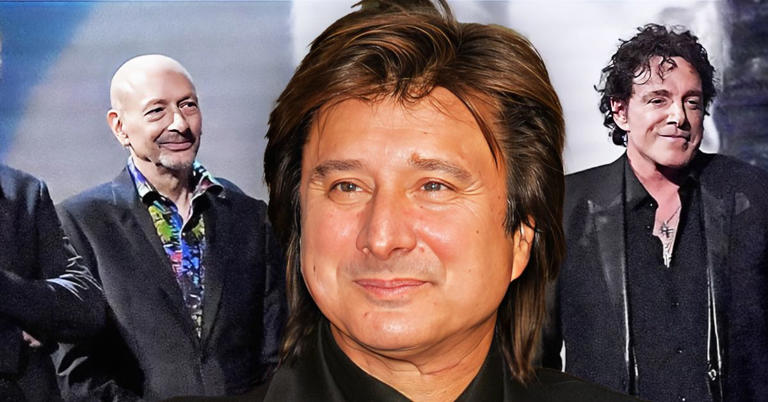
- Manage Account
Journey’s 10 Best Songs
Sure, "Don't Stop Believin'" -- but there's a whole lot more.
By Gary Graff
- Share this article on Facebook
- Share this article on Twitter
- Share this article on Flipboard
- Share this article on Pinit
- + additional share options added
- Share this article on Tumblr
- Share this article on Reddit
- Share this article on Linkedin
- Share this article on Whatsapp
- Share this article on Email
- Print this article
- Share this article on Comment

Though it arrives amidst lawsuits , social media sniping and infighting, Journey is turning 50 this year.
During that half century, the group has sold more than 100 million records worldwide, logging 11 platinum-or-better albums (including Diamond certifications for 1981’s Escape and 1988’s Greatest Hits) , earning eight top 10 albums on the Billboard 200 and 25 hits on the Billboard Hot 100. It’s also been a reliable ticket-selling act for most of its career, and in 2017, the band was inducted into the Rock and Roll Hall of Fame.
Journey’s is the story of eras. When the group originally formed in San Francisco in 1973, original manager Herbie Herbert helped bring together guitarist Neal Schon and keyboard player/vocalist Gregg Rolie from Santana, bassist Ross Valory and rhythm guitarist George Tickner from Frumious Bandersnatch and drummer Prairie Prince from The Tubes. Prince would be replaced by David Bowie/Frank Zappa skins man Aynsley Dunbar, while Tickner would leave after Journey’s self-titled first album in 1975. The remaining quartet recorded two more albums before Steve Perry came on board for 1978’s Infinity, which began the band’s run of multi-platinum smashes — also marking the first appearance of Alton Kelley and Stanley Mouse’s iconic scarab logo for the band. Dunbar was replaced by Steve Smith for 1979’s Evolution , and Rolie would leave in 1980 with Jonathan Cain of The Babys joining to help elevate the band to even greater fortunes on Escape and Frontiers .
The palette has been diverse, but there are common elements among Journey’s best songs — sturdy melodies and sing-along choruses, usually leading into one of Schon’s majestic guitar solos. But within that mold there’s also been plenty of invention and clever arrangements that have never been as formulaic as some of the band’s detractors (particularly during their early ‘80s heyday) would have you believe.
Journey has gone through its fair share of lineups, with singer Arnel Pineda on board since 2007 — the longest continuous tenure of any Journey frontman. The group released Freedom , it’s first new studio album in 11 years, in 2022, and despite the current legal fractures (which you can read about in detail here ), still they ride, as the Escape track says — and may they keep on runnin’ for a long time.
With all that in mind, here are our picks for Journey’s 10 best songs — not all of which come from the biggest hits.
"Someday Soon" ( Departure , 1980)
This album track from Rolie’s finally studio effort with the band is a hypnotic tone poem, with a ringing, cushy ambience and a hippie kind of optimism – not to mention the best give-and-take Perry and Rolie achieved during their time together in the band. It’s of course been eclipsed by Journey’s myriad hits (“Any Way You Want It” is the enduring top 40 Hot 100 hit from Departure ), but it’s a gem worthy of discovery. Listen here.
"Escape" ( Escape , 1981)
The title track from Journey’s Billboard 200-topping studio album straddled the hard rock/pomp attack of the group’s mid-‘70s output with the melodic sensibility of the Perry-Cain axis. Its five-minute length provides room for the arrangement to stretch out and flow from one song part to the next, with a crunch that was part of Journey’s palette at the time. Listen here.
"Of a Lifetime" ( Journey , 1975)
The Journey of 1973-77 was certainly a different creature than the hitmaking colossus so many know and love. The group’s initial lineups flexed instrumental muscles, smoothly knitting together a number of styles more interested in the journey (ba- dum ) than any commercial destination. The first track from its first album is a prototype, leaning into blues, psychedelic rock and a touch of Latin, with the first of what would become many standout Schon solos, and a tuneful sturdiness delivered by Rolie’s soulful vocal. Listen here.
"Faithfully" (Frontiers , 1983)

The melody of this top 20 Hot 100 hit came to Cain in a dream on a tour bus, and his paean to the struggle between home and the road was written in a half-hour. The result was a swoon-inducing ballad tailor-made for a sea of lighters (back then) and cellphone flashlights (now), capturing one of Perry’s best recorded performances and one of Schon’s most inspired solos. One of its great side stories is that Prince contacted Cain after he wrote “Purple Rain,” concerned that it might be too similar to “Faithfully.” Cain determined it wasn’t, but joked to Billboard that, “After seeing what it became, I should have asked for a couple of points….”
"Ask the Lonely" (single, 1983)
Recorded for Frontiers , this one wound up in the romcom Two of a Kind (starring the Grease duo of John Travolta and Olivia Newton-John) and rocked its way to No. 3 on the Mainstream Rock Airplay chart. Like “Only the Young,” which wound up in Vision Quest two years later, it showed that Journey was on roll – and well-suited for big soundtrack moments. Listen here.
"Who's Crying Now" ( Escape, 1981)
The best of Journey’s swoon songs — started by Perry while driving into Los Angeles and finished with Cain — has a subtlety and dynamic build that sets it apart from the many others of its ilk they’d create. The verse slips into the chorus with a soulful ease, and Schon’s guitar accents deftly build up to his searing solo at the end. The Escape single reached No. 4 on the Hot 100. Listen here.
"Feeling That Way" ( Infinity , 1978)
If fans at the time wondered how Steve Perry and Gregg Rolie would co-exist, this was the answer — an ebb-and-flow tradeoff that proved they could complement each other as lead singers as well as harmonize smoothly together (first evidenced by Infinity ‘s lead track “Lights”). Its medley-like pairing with the next track, “Anytime,” was gravy that would become a motif on the next few Journey albums. Listen here.
"Just the Same Way" ( Evolution , 1979)
Journey’s fifth album had a punchier sound than Infinity — though they shared producer Roy Thomas Baker — which worked to the benefit of the album’s first single. Led by Rolie’s piano and muscular lead vocal, with Perry responding on the choruses and bridge, it reached No. 58 on the Hot 100 in 1979. In a perfect world this would have been as big as anything from Escape or Frontiers, but it’s still a convincing introduction to the Rolie era of the band. Listen here.
"Don't Stop Believin'" ( Escape , 1981)

More than a billion Spotify streams, a Library of Congress National Recording Registry placement and plays at virtually every sporting event around the world don’t lie — this one is Journey’s pinnacle of success. Created during a rehearsal at the group’s warehouse HQ in Oakland, Calif., it gave us the “streetlight people” of Hollywood’s Sunset Strip and put the non-existent South Detroit on the map. And it saves the chorus for the song’s end, after the guitar solo. A cross-generational hit? Believe it, gleefully.
"Stone in Love" ( Escape , 1981)
Schon reportedly called this “Stoned in Love” when he wrote the riff, and it’s certainly an addictive track that’s the best roll-down-the-windows-and-crank-it-up Journey fix you could ask for — not to mention a frequent show opener. A No. 13 Mainstream Rock Airplay hit in 1981, the song is practically a deep cut today. But its anthemic chorus is a spirit-lifter and the dynamic breakdown that segues into the song-closing guitar solo harks back to the ambitious musicality of the first few albums. “Stone” is a gem that still shines bright. Listen here.
Get weekly rundowns straight to your inbox
Want to know what everyone in the music business is talking about?
Get in the know on.
Billboard is a part of Penske Media Corporation. © 2024 Billboard Media, LLC. All Rights Reserved.
optional screen reader
Charts expand charts menu.
- Billboard Hot 100™
- Billboard 200™
- Hits Of The World™
- TikTok Billboard Top 50
- Song Breaker
- Year-End Charts
- Decade-End Charts
Music Expand music menu
- R&B/Hip-Hop
Culture Expand culture menu
Media expand media menu, business expand business menu.
- Business News
- Record Labels
- View All Pro
Pro Tools Expand pro-tools menu
- Songwriters & Producers
- Artist Index
- Royalty Calculator
- Market Watch
- Industry Events Calendar
Billboard Español Expand billboard-espanol menu
- Cultura y Entretenimiento
Honda Music Expand honda-music menu
- Translation missing: en.general.social.links.spotify
- Translation missing: en.general.social.links.apple
- Translation missing: en.general.social.links.amazon
Item added to your cart

- Choosing a selection results in a full page refresh.
‘DEVO’ documentary a brisk visual ride through the band’s unique journey through pop music and culture
- Updated: Apr. 12, 2024, 1:13 a.m. |
- Published: Apr. 10, 2024, 6:00 a.m.

CIFF48 closes on Saturday with Chris Smith's documentary "Devo," playing in the Connor Palace at 7:30 p.m. on Saturday, April 13. (Photo credit: Janet Macoska) Janet Macoska
- Malcolm X Abram, cleveland.com
CLEVELAND, Ohio - The 48th International Cleveland Film Festival wraps up on Saturday and the whole shebang is bookended, more or less, by two films about famous music bands from Akron.
“This is A Film About The Black Keys” screened April 5, a prime spot on the first Friday night of the festival. At 7:30 p.m. on Saturday, April 13, another new documentary about an Akron band, surprisingly titled, simply “Devo” will close the festival.
It’s an adroit juxtaposition on the part of the festival organizers. The two films have a lot in common, of course, from the Akron connections to a shared mission to chronicle the origin and development of famous local music makers. But the choices made by the respective bands and documentarians, Jeff Dupre for the Keys and Chris Smith for “Devo,” provide an interesting contrast.
The Keys film focuses on the ever-evolving relationship of principals Patrick Carney and Dan Auerbach. “Devo” focuses on the relationship the art-project-turned-hit-MTV band had with pop music, pop culture and America from their childhoods in post-war 1950s Ohio through the end of their initial run in the early ‘90s.
The 93-minute “Devo” film is a pleasantly brisk watch with plenty of classic subversive Devo visuals, videos, and archival footage, including rarely seen clips likely to spark nostalgia in the few local folks who caught the band’s debut performances at Kent State in 1973 and watched them repeatedly and rather purposefully bomb at the long-gone Akron bar The Crypt in the mid-70s.
Devo frontmen Mark Mothersbaugh and Gerald Casale do most of the talking in both the contemporary interviews and in the many vintage clips, with germane additions from fellow band member Bob 1 (Bob Mothersbaugh) and the late Bob 2 (Bob Casale) and drummer and “human metronome” Alan Myers. Also included are founding members Jim Mothersbaugh and Bob Lewis, though the film completely skips over the latter’s 1978 lawsuit that was eventually settled. Devo prefers to focus on the band’s lawsuit against Warner Bros. and Virgin Records, that wound up giving the group the short end of the music business stick.
What viewers also get is insight into Devo’s conceptual origins, including the importance of Kent State in evolving these young idealistic hippies into subversive art-terrorists. Mothersbaugh says his time as a young Vietnam-era protester ended quickly. “Rebellion was obsolete,” he says, particularly after an incident where protesters threw rocks over his head at a campus building. The next day everything went back to “normal,” as if the student protest was just another performative act of groupthink that didn’t seem to change anything.
For Casale, his evolution at Kent State was more bloody and personal, specifically May 4, 1970, when the National Guard fired on students, killing four, including Casale’s friends Allison Krause and Jeffery Miller. “My time at Kent State was the defining era of my life, there would be no Devo without that,” Casale says early in the film.
Related reading: DEVO’s Gerry Casale talks about the beginning ‘of’ the end of Devo’s days on the road
Read more: Akron native Mark Mothersbaugh talks ‘Cocaine Bear,’ Devo’s 50th-anniversary plans and Rock Hall subversion
The film unfolds chronologically from the band’s earliest days in Akron, mixing Dada concepts, with the bright, shiny absurdity of advertising and their industrial Rubber City roots, their disdain and disillusionment with the false promise of the 1950s suburban haven.
It traces the band’s debut at New York’s fabled CBGB’s and run-ins with Clevelands Dead Boys at Max’s Kansas City and looks at their big move to Los Angeles. Throughout, various famous folk, including Brian Eno, who produced their debut album, “ Q: Are We Not Men? A: We Are Devo!,” Iggy Pop and David Bowie (side note: it’s fun to hear a young Bowie say “They’re from Akron, Ohio”), pop in old recordings to sing the band’s praises. The band’s “Saturday Night Live” debut experience, where many folks (including this young spud) first saw Devo perform, is also covered in illuminating detail.
Also throughout the film, the contemporary Casale and Mothersbaugh (with assists from their younger selves) are constantly attemping explain just what the hell it is that this band of midwestern oddballs think they’re doing.

DEVO, photographed in Holland, 1978. (Photo: Barry Schultz) Barry Schultz
Is it art? Is it all a big joke? Is it audio/visual musical satire? Is it art, imitating satire, lampooning the corporatization of American life and culture? The answer seems to be all of the above. But as the years and interviews pass by onscreen, the band members seem to go from appreciating confounding folks to becoming increasingly frustrated at just how few people, beyond the dedicated “spuds,” actually “get it,” even as they are subsumed into the mainstream through the MTV video revolution.
Like many band docs, “Devo” follows the band’s rise and commercial heights and it’s nostalgic fun to watch the weirdness of seeing Devo with anodyne ‘70s talk show hosts Merv Griffin or sitting in director’s chairs with TV’s Mike Douglas, with a smiling John “Bo Duke” Schneider between them.
Also given plenty of screen time is “Whip It,” Devo’s most successful single and video, and the controversy surrounding the popular video, yet another bit of visual satire that was largely misinterpreted by music listeners and the mainstream, even as it was becoming a Top 20 pop hit.
What coalesces from “Devo” is that the band of art and music outsiders that formulated and championed the satirical concept of “de-evolution” eventually, and perhaps, they admit, inevitably, found itself sucked right into the middle of the devolving culture it disdained.
“It’s depressing that you succumb to the same reality that you were satirizing,” Casale says near the end, as the film shows the band’s commercial fortunes falling, their exhaustion from the make-a-record, make-some-videos, go-on-tour cycle.
They try to subvert the corporate music business game but the concepts they so successfully and vividly lampoon never take hold. Instead of the de-evolution of American society, we get te “mass marketing of idiocy,” as Casale refers to MTV after it abandoned Devo and entered the “Beavis and Butthead” era sapped the band’s spirits.
It may sound like a downer ending, and arguably it is, if viewers think too hard about how far we haven’t come in many respects. But the relatively fast-paced film is still an interesting look at an era in American pop culture and at the band that consistently flipped that culture the proverbial bird -- even if it ended up being consumed by it all in the end.
“Devo” screens at 7:30 p.m. at the Connor Palace Theater at Playhouse Square.
The 48th Cleveland International Film Festival is running now through April 13 at Playhouse Square. It will be followed by CIFF48 Streams, an online version of the fest on April 14-21. Tickets for in-person screenings are $16 for CIFF members and $18 for non-members. Tickets for CIFF48 Streams screenings cost $12 for CIFF members and $14 for non-members. Go to clevelandfilm.org for more information.
Stories by Malcolm Abram
- Sleater-Kinney coming to Cleveland this summer: Where will they rock?
- Keyshia Cole coming to Cleveland this summer with a trio of R&B stars
- Aerosmith is getting back on the road, books new date in Cleveland
- Rock Hall inductee coming to Cleveland this summer: Where will he be “chooglin’?”
If you purchase a product or register for an account through a link on our site, we may receive compensation. By using this site, you consent to our User Agreement and agree that your clicks, interactions, and personal information may be collected, recorded, and/or stored by us and social media and other third-party partners in accordance with our Privacy Policy.
Meet Our Mid-Valley: Tim Allwein takes on a new career narrating audiobooks at 70

This is part of a weekly series introducing readers to individuals who are passionate about our Mid-Valley community.
Tim Allwein rarely listened to audiobooks before he started narrating them. He got his books the traditional way.
“I like to read ‘em,” he says.
Allwein says he was drawn to the creativity he is afforded when narrating books and the ability to combine his varied life experiences — like fronting an 80s metal band and working as a radio disc jockey.
But even after he took courses in narration and created a recording studio in his Salem home, Allwein had to hustle to make it work. It’s similar to how he’s made many of his careers work.
“That’s the key is pouring it on and not giving up,” Allwein, 70, said. “I had to reach all the way back to 1979 when I was going to all those club owners and saying give us a shot. Pretty soon we were booked all the time.”
Co-founding 80s band St. Elmo's Fire
In his early 20s, Allwein was playing jazz trumpet in a six-piece funk band called Sail the Sun. In the late 1970s, they played six days a week in restaurants and clubs around central California.
He and guitarist Jeff Jones bonded over music. “We always felt constricted in that band because we were kind of rockers,” Allwein said.
In 1979, they formed St. Elmo’s Fire — the Brat Pack movie of the same name wouldn’t be released until 1985. Allwein was the lead singer and Jones was the guitarist.
The band was based in Davis, Calif., and they frequently played venues in the Bay Area like The Keystone Berkeley. They also spent a lot of time in Los Angeles, playing legendary Sunset Strip venues like The Roxy Theatre, The Rainbow and Gazzarri’s. They opened for 80s rock bands like Nightranger, Nazareth and Y&T.
Allwein and Jones wrote a song called Summertime Girls and recorded a demo. They played the song at a show while opening for Y&T, but didn’t release it. About six months later, Y&T released Summertime Girls as a completely different song and it became Y&T’s biggest hit.
“That’s kind of the story of my life, a lot of near misses,” Allwein said.
In 1982, St. Elmo's Fire cut the single, Really In Love with the B-side of Too Bad. They self-financed the 45 and had thousands of copies made.
Really In Love got play on radio stations around the nation. It had more impact overseas. Really in Love was a hit in West Germany and was in the top 40 in Japan.
In 1985, as the band was preparing to leave for a tour of the American South, Allwein said Jones wanted to move the band to a heavier sound, something closer like Metallica.
“I wanted to be a singer, not a screamer,” Allwein said.
A position at a car dealership brings Allwein to Oregon
As a 32-year-old with a young family, Allwein went back to selling cars.
His father was a service manager at a dealership when he was growing up and before his music career took off, Allwein had worked in dealerships.
He bounced around California, eventually rising to the position of general manager.
Allwein tried different professions like selling real estate and truck driving. But he kept going back to selling cars.
“I was just always looking for a way out of the car business,” he said. “The money was good and it was the thing I fell back on when I was broke.”
In 2006, he moved to Astoria for a job at a dealership. Two years later, he was working part-time jobs as a disc jockey at a small radio station, a comic book store and a video store. After a couple years, he bought the comic book store, Amazing Stories, which he closed in 2012.
“That was a bad idea,” Allwein said. “Lost a lot of money on that.”
Finding a new career in audiobooks
When the COVID-19 pandemic hit in 2020, Allwein was living alone in his Astoria apartment. He met Salem resient Janae Mitchell online. After months of talking on the phone, they arranged to meet in person in Salem.
“We just hit it off,” Allwein said. “I ended up moving over here at the end of April 2021" and during the summer of 2023, he got married for the third time.
Allwein had been retired for years, but when he moved to Salem he took a job as a checker at Roth’s Fresh Market’s on Commercial Street SE in south Salem.
“I wanted to do something I’ve never done,” he said.
A few years ago, he and Janae were listening to a Stephen King audiobook and she suggested that Allwein has an interesting voice.
Allwein knew how to record and edit sound from his music and disc jockey experiences. So he purchased a sound booth and took a course in narrating audio books.
Allwein auditioned and made samples, but it took a year before he got a job.
An author reached out to him in September 2023 saying he wanted him to hire him to narrate his book, Silly Mutt My Loveable, Crazy Rat Terrier and Other Dog Tails . But in their correspondence, the author called him the wrong name. Allwein realized the author was intending to hire someone else. So he sent the author an audio sample.
“Yeah, yeah, this will work,” the author replied.
That awkward exchange led to Allwein narrating the audiobook, his first job as a professional narrator.
He’s narrated two more books since leaving Roth's to focus on audiobooks: Age Defying Intelligence and Mastering the Matrix.
There’s lots of other narrator work available to him. But he chooses to focus on audiobooks.
“I need something to do," said Allwein . "I like having something creative to do.”
If you have an idea for someone we should profile for this series, please email Statesman Journal executive editor Cherrill Crosby at [email protected]
Bill Poehler covers Marion and Polk County for the Statesman Journal. Contact him at [email protected]

IMAGES
VIDEO
COMMENTS
Having made some recordings between 2001 and 2002, the band released a four-track EP titled Red 13 in November under their new label Journey Music, with an album cover design chosen through a fan contest with the online cover designed by Kelly McDonald, while the retail cover designed by Christopher Payne was only made available at the band's ...
Journey is an American rock band from San Francisco, California.Formed in February 1973 as the Golden Gate Rhythm Section, the group was renamed Journey in the summer and originally included keyboardist and vocalist Gregg Rolie, lead guitarist Neal Schon, rhythm guitarist George Tickner, bassist Ross Valory and drummer Prairie Prince.The band's lineup as of 2021 features Schon, alongside ...
Ross Valory, born on February 2, 1949, in San Francisco, California, is an American musician renowned for being Journey's original bass guitarist. He joined the band at its inception in 1973 and contributed to albums like "Journey" (1975), "Infinity" (1978), "Escape" (1981), and many more. Valory played both the bass guitar and ...
Formation of the Band. Journey was formed in 1973 in San Francisco, California, bringing together a group of highly talented musicians. The founding members included Neal Schon, Gregg Rolie, Ross Valory, Aynsley Dunbar, and George Tickner. With their combined musical prowess and creative vision, they set out to create something extraordinary.
Steve Perry was the lead singer of pop rock band Journey from 1977 to 1987. He is known for having a wide vocal range, which can be heard on such popular hits as "Don't Stop Believin'" and "Oh ...
Jonathan Leonard Friga (born February 26, 1950), known professionally as Jonathan Cain, is an American musician, singer and songwriter.He is best known as the keyboardist and rhythm guitarist for Journey.He has also worked with The Babys and Bad English.Cain was inducted into the Rock and Roll Hall of Fame as a member of Journey in 2017. He also maintains a solo career as a contemporary ...
In early 2020, Journey frontman Arnel Pineda flew back to his native Manila after playing a corporate gig in Texas. He was gearing up for a big year in which Journey would cut their first new ...
We're bringing you the stories behind your favorite band's songs and sounds. As their name suggests, Journey's career has been an epic adventure since day one. A meteoric force in the stadium rock scene, Journey insured their legacy in rock 'n' roll history using a mix of musical virtuosity, soaring balladry and undeniable appeal. 00:00.
About Journey. Journey is an American rock band that formed in San Francisco in 1973, composed of former members of Santana and Frumious Bandersnatch. The band has gone through several phases; its ...
Neal Schon lead guitar & backing vocals, Jonathan Cain keyboards & guitar, and Arnel Pineda lead vocals
Keys, Songwriting. In 1976 Jonathan Cain released his first solo record, Windy City Breakdown. In 1979 he joined the band, The Babys, and in 1980 joined the rock band, Journey, rounding out the songwriting genius behind the defining album, Escape, which was RIAA certified Diamond this year. Cain's signature piano, synth playing and songwriting ...
Journey's official live video for 'Don't Stop Believin'' performed in Houston. Listen to Journey: https://journey.lnk.to/listenYDWatch more Journey videos: h...
Journey's band history is the epitome of 80s rock and the clashes between some of the most extraordinary rock musicians of the time. Like all Journey fans, the first songs I heard were Steve Perry's lead emotional ballads. He was the perfect singer for the ideal backing band.
Journey had their biggest commercial success between 1978 and 1987, when Steve Perry was lead vocalist; they released a series of hit songs, including "Don't Stop Believin'", which in 2009 became the top-selling track in iTunes history among songs not released in the 21st century.
Photo: Kevin Mazur 2017. Journey 's original vocalist and keyboardist, Gregg Rolie, is set to join the band when it hits the road next month for its North American "Freedom Tour 2023," according to guitarist Neal Schon — marking the first time has performed with the diamond-selling Rock and Roll Hall of Fame group in more than four decades.
Time Passages has announced "Journey: Worlds Apart", the definitive accounting of the "Don't Stop Believin'" hitmakers by award-winning journalist Nick DeRiso. A multiple columnist of the year ...
Experience the Evolution of Music with Rock Group Journey. Journey is one of the iconic rock bands that took the world by storm in the late 70s and early 80s. The band's distinctive blend of rock, classical, and progressive music marked them out as visionary musicians whose sound would continue to influence audiences for decades to come.
Journey continued without Perry though, finding other lead singers before ultimately reuniting and releasing new music. Throughout the '80s, the band Journey enjoyed plenty of success.
Her bandmate, Jackie Proctor, said that there could be a better reason for how they discovered Journey. "Maybe their dads or uncles listen to it, and then you grow up on it and you're like ...
Journey will release Freedom, their first album in 11 years, this Friday (July 8). With the 11-year gap between records, the band's longest break between albums, and the presence of drummer/producer Narada Michael Walden, Freedom, according to guitarist Neal Schon, is a true representation of who Journey is in 2022.
Journey "Don't Stop Believin'" (Live 1981: Escape Tour - 2022 HD Remaster) Photo : Courtesy Photo. More than a billion Spotify streams, a Library of Congress National Recording Registry placement ...
Welcome to the official online store of iconic rock band, Journey! Shop official apparel, accessories, gear and exclusive products. ... Music; About; Store; Collections. 2024 Tour Merch ... Stay up to date on the latest Journey merch released and tour dates for 2023 + Beyond. Email More Info.
Track listing:01. Only the Young 00:00 02. Don't Stop Believin' 04:1903. Wheel in the Sky 08:30 04. Faithfully 12:42 05. I'll Be Alright Without You 17:12 06...
"Devo" focuses on the relationship the art-project-turned-hit-MTV band had with pop music, pop culture and America from their childhoods in post-war 1950s Ohio through the end of their initial ...
Official Audio for "Don't Stop Believin'" by JourneyListen to Journey: https://Journey.lnk.to/listenYDWatch more Journey videos: https://Journey.lnk.to/liste...
Allwein says he was drawn to the creativity he is afforded when narrating books and the ability to combine his varied life experiences — like fronting an 80s metal band and working as a radio ...